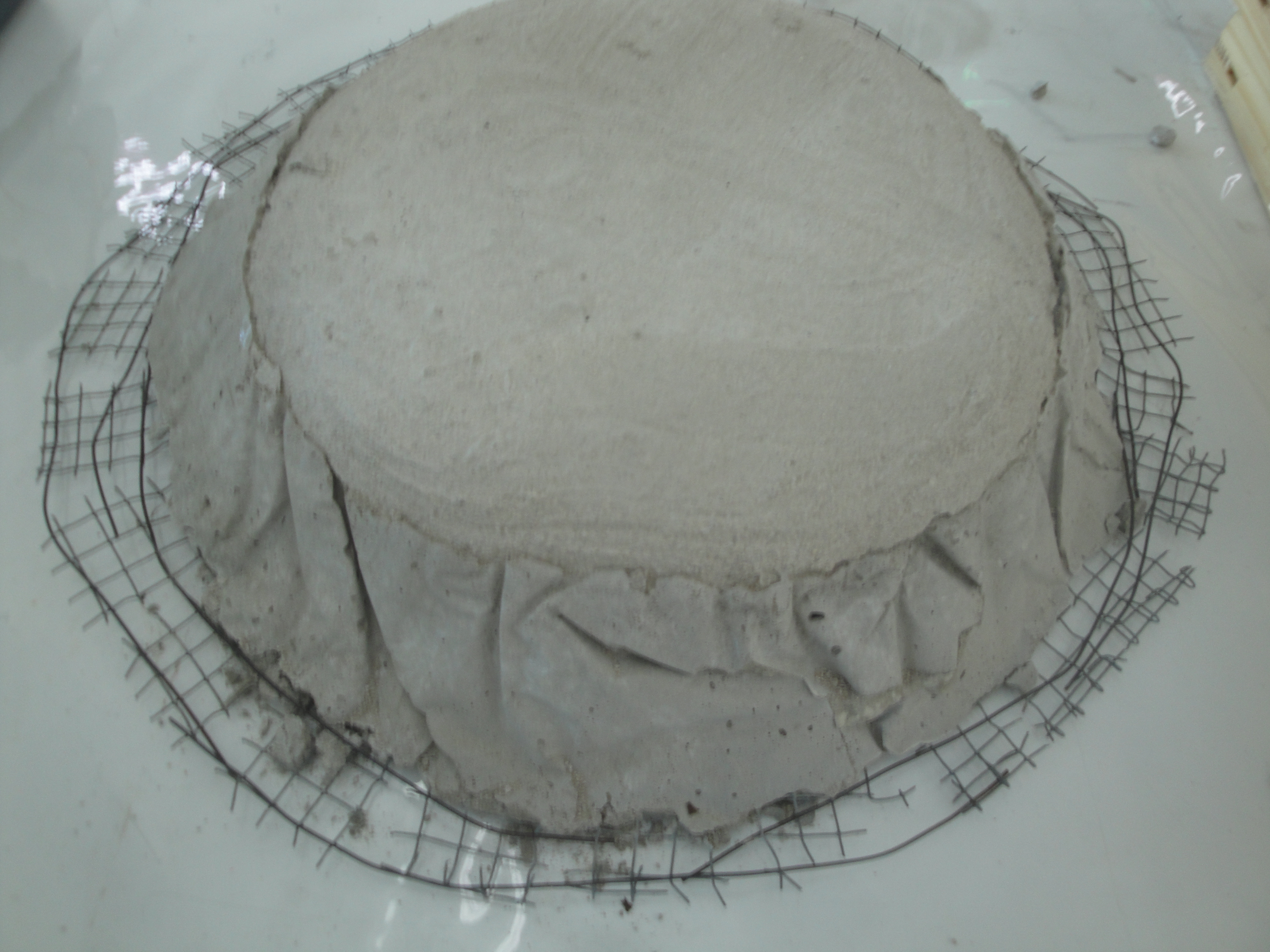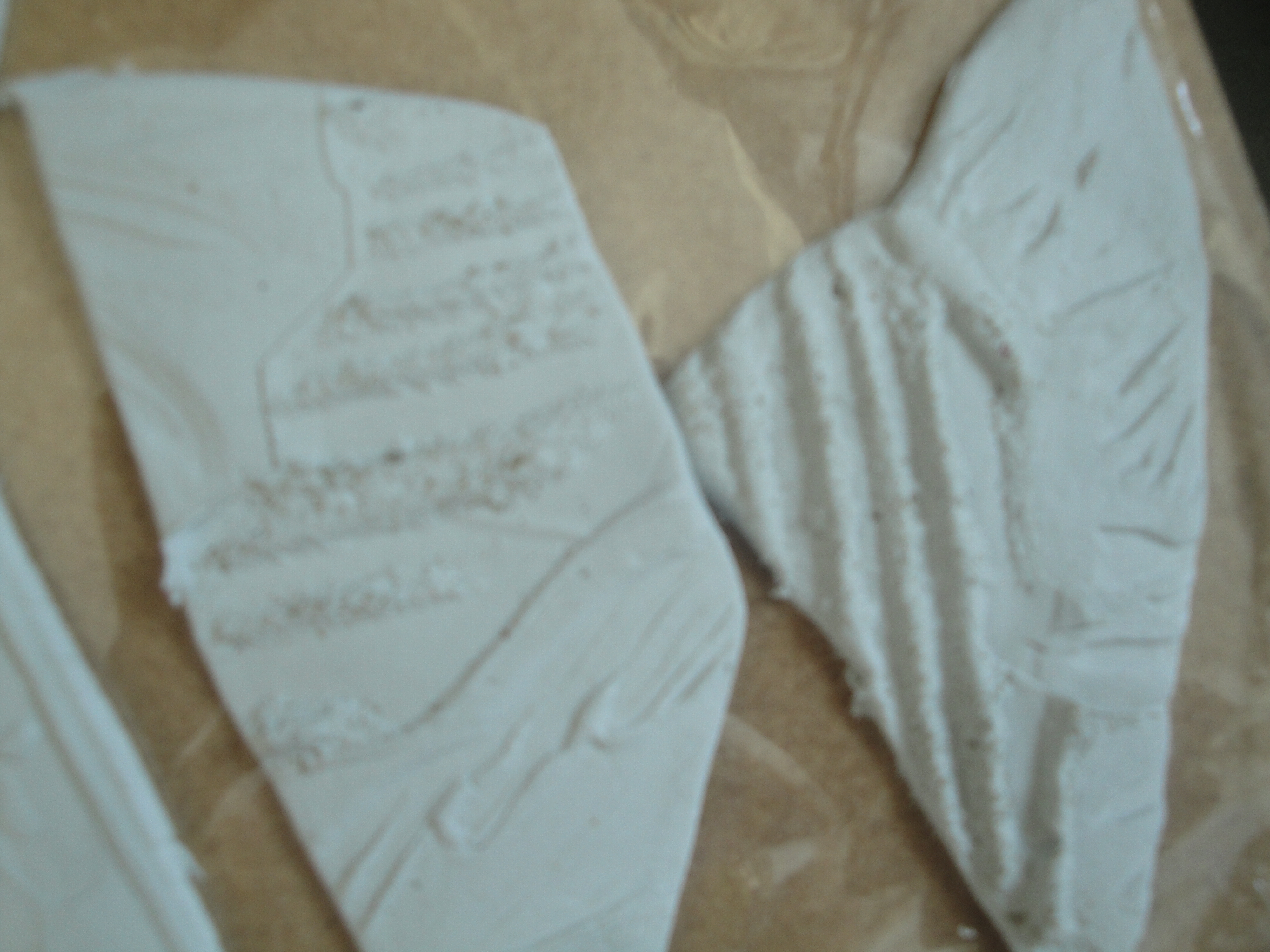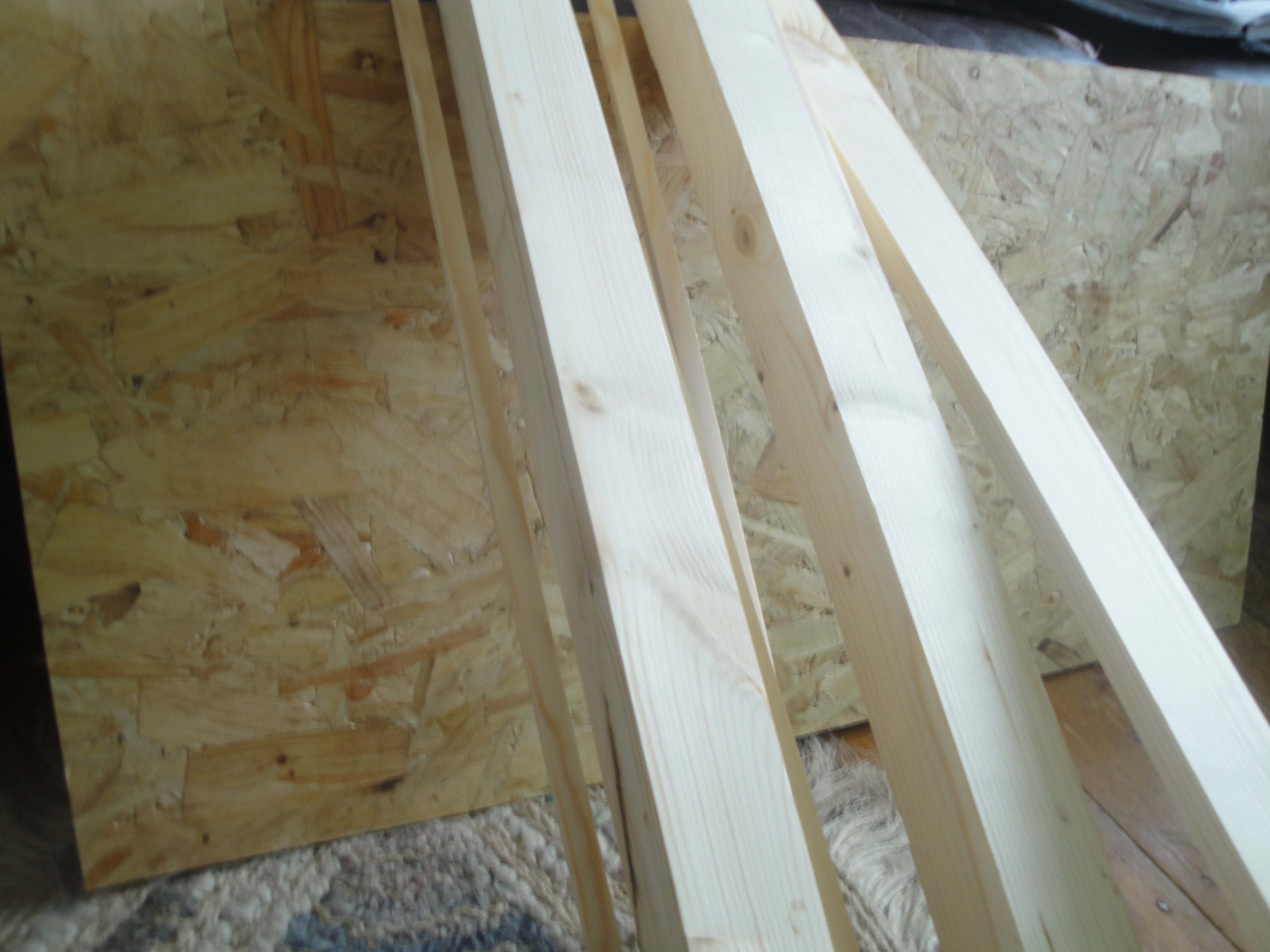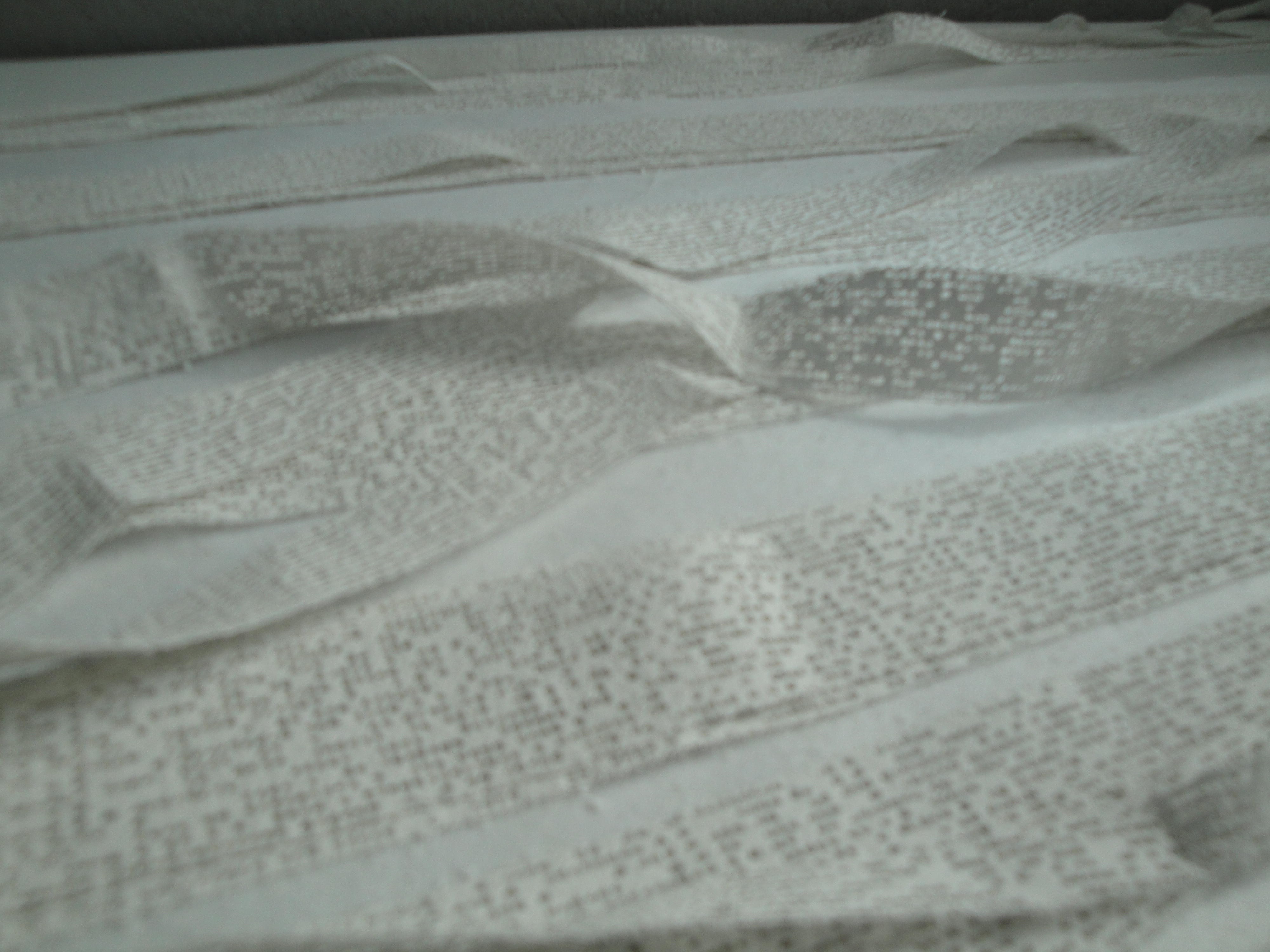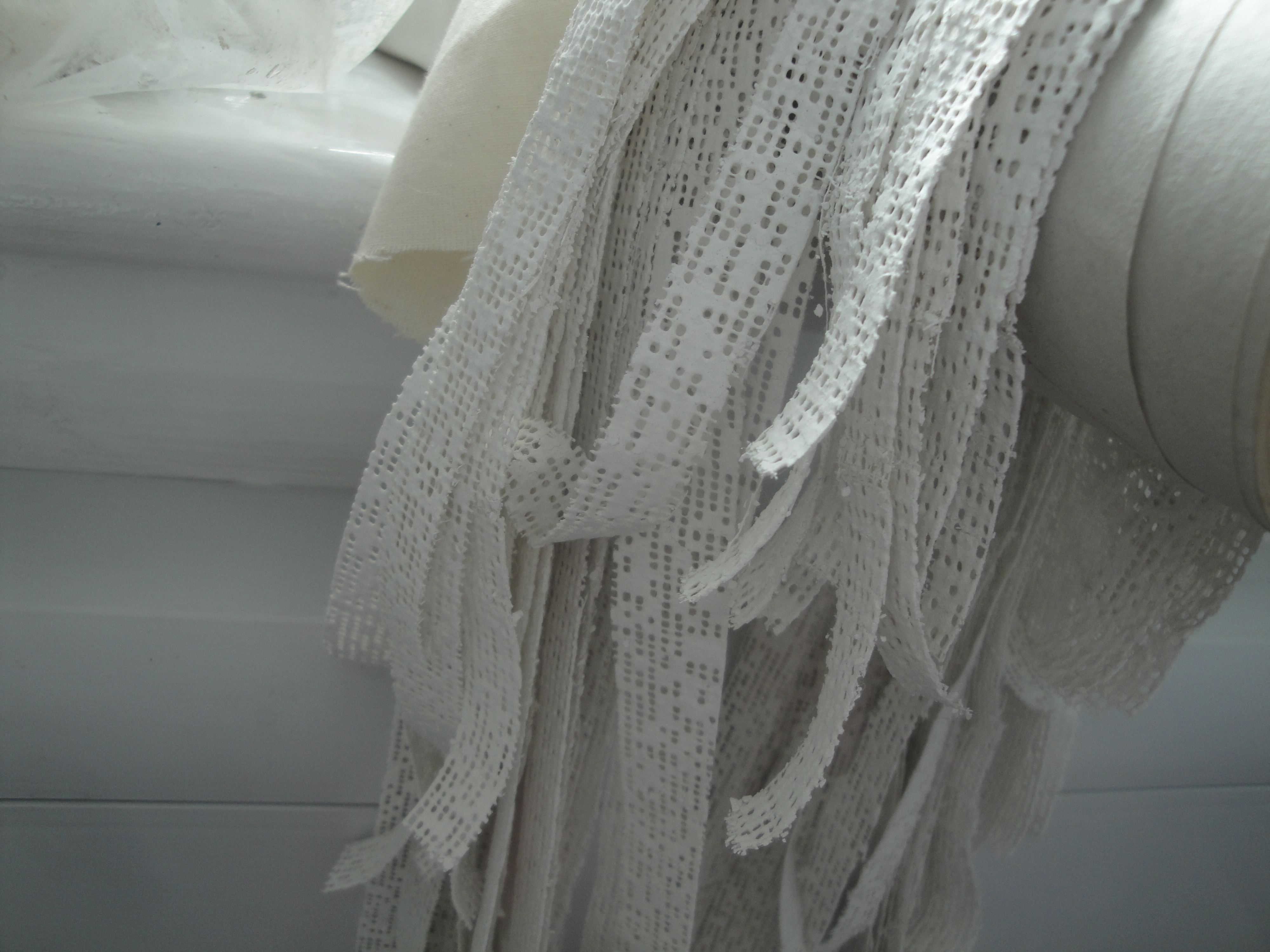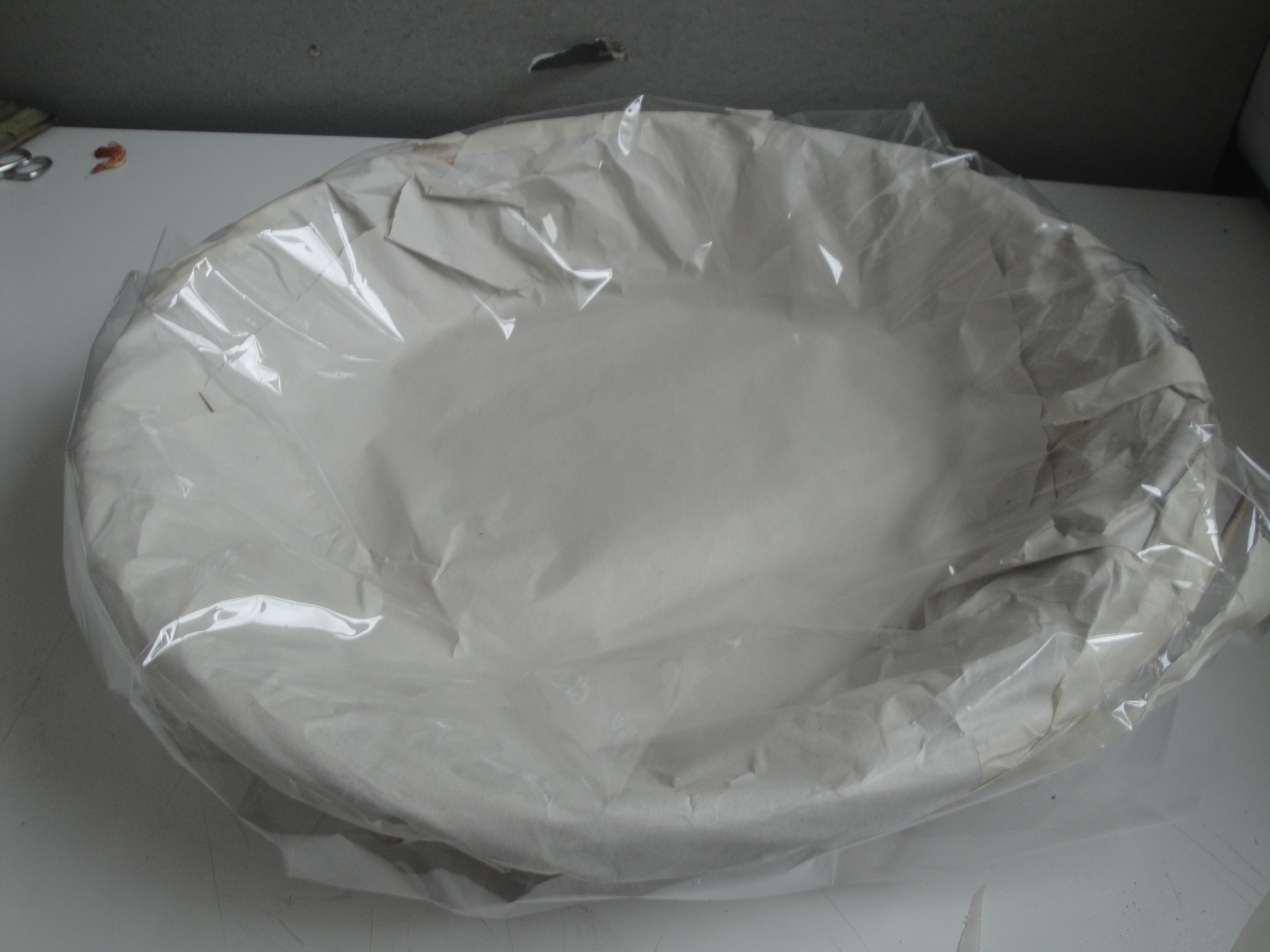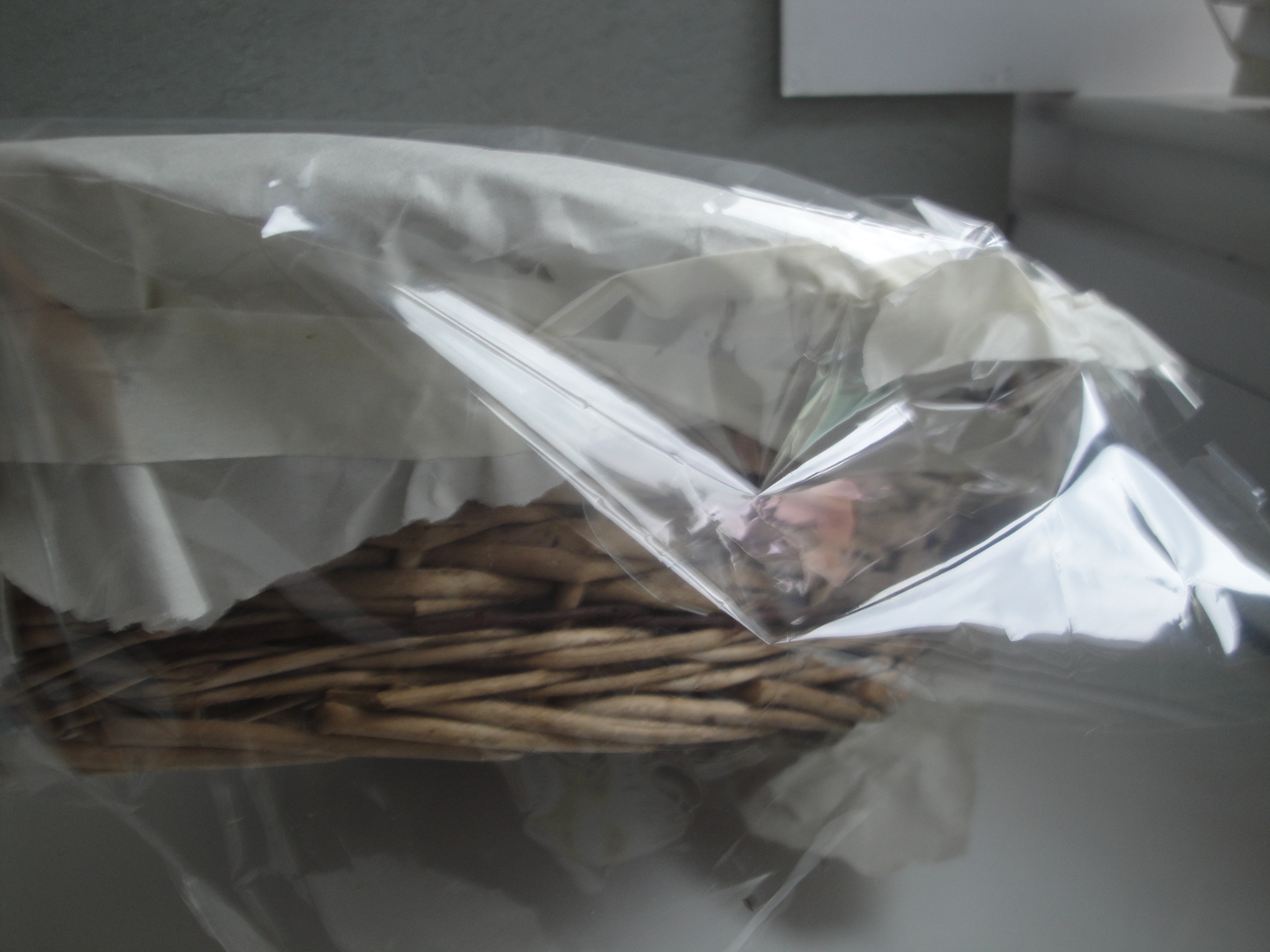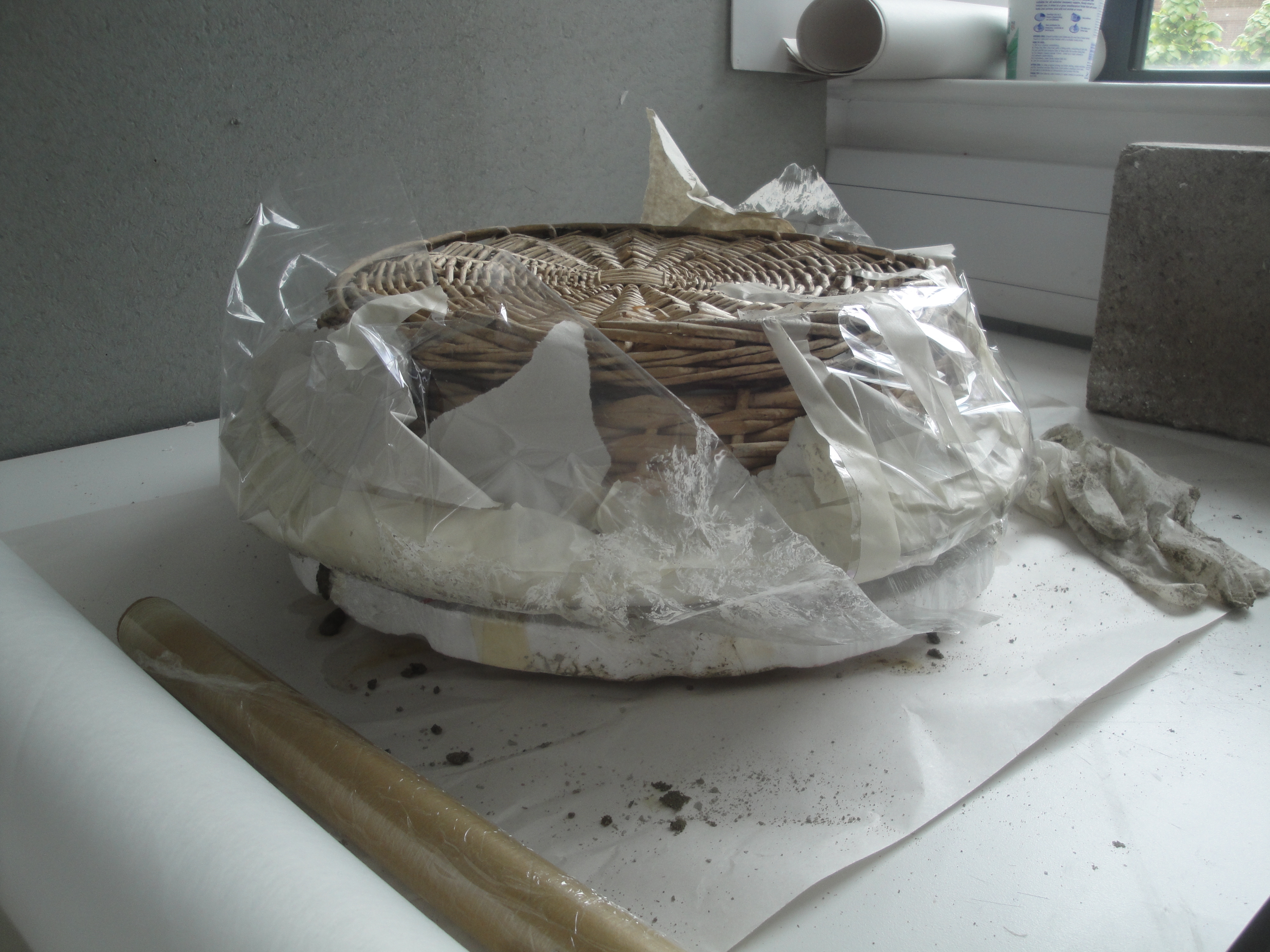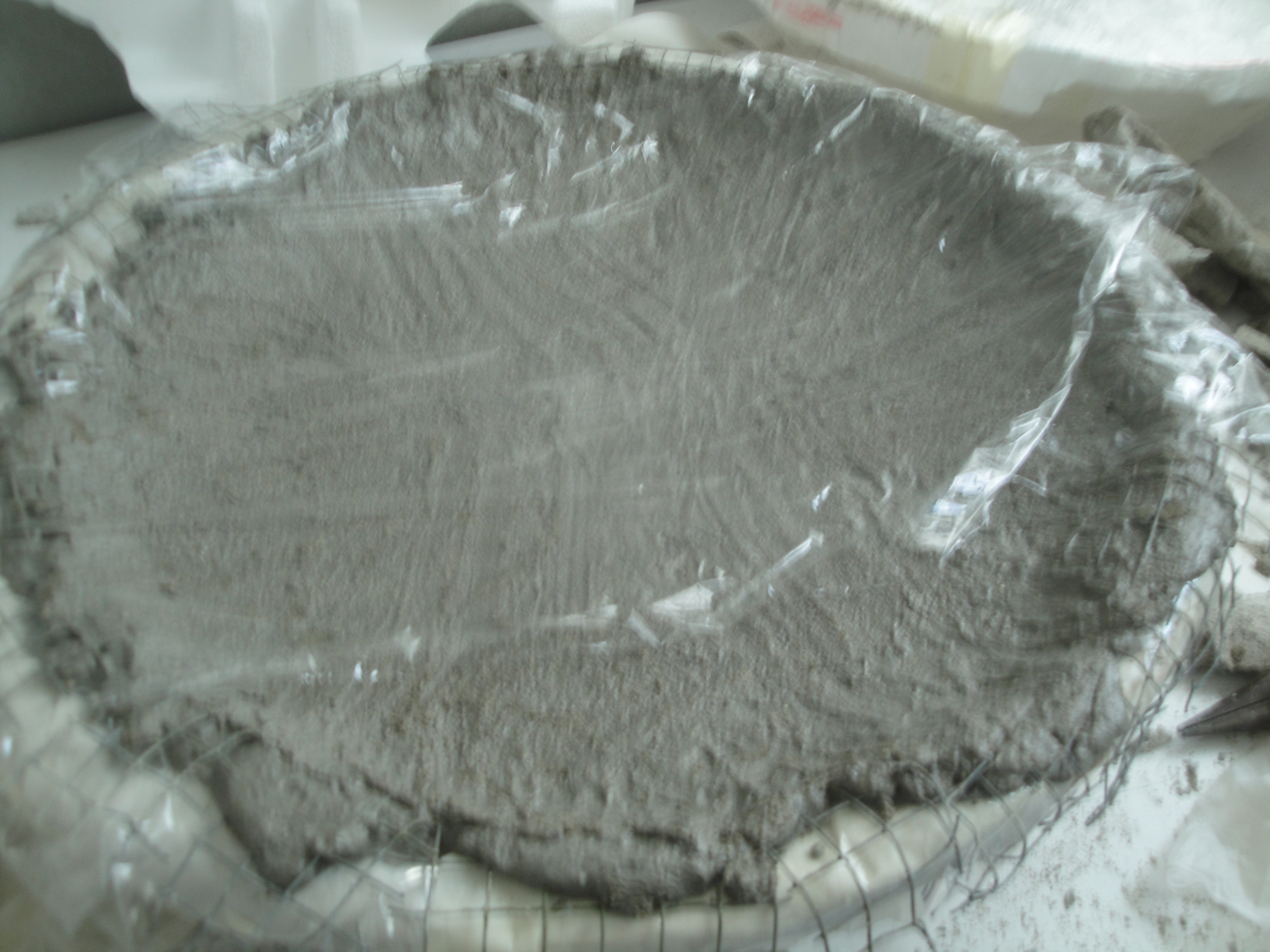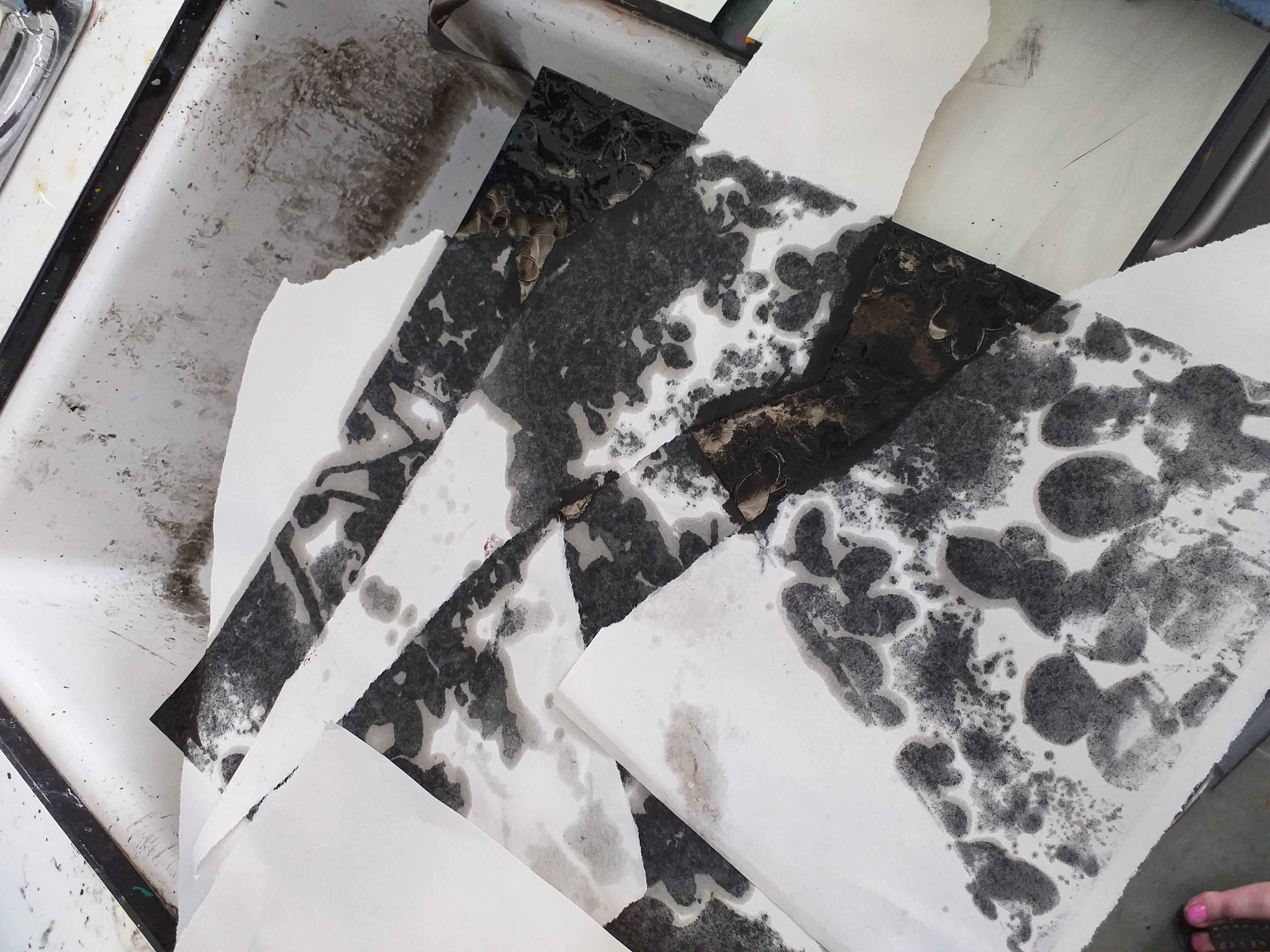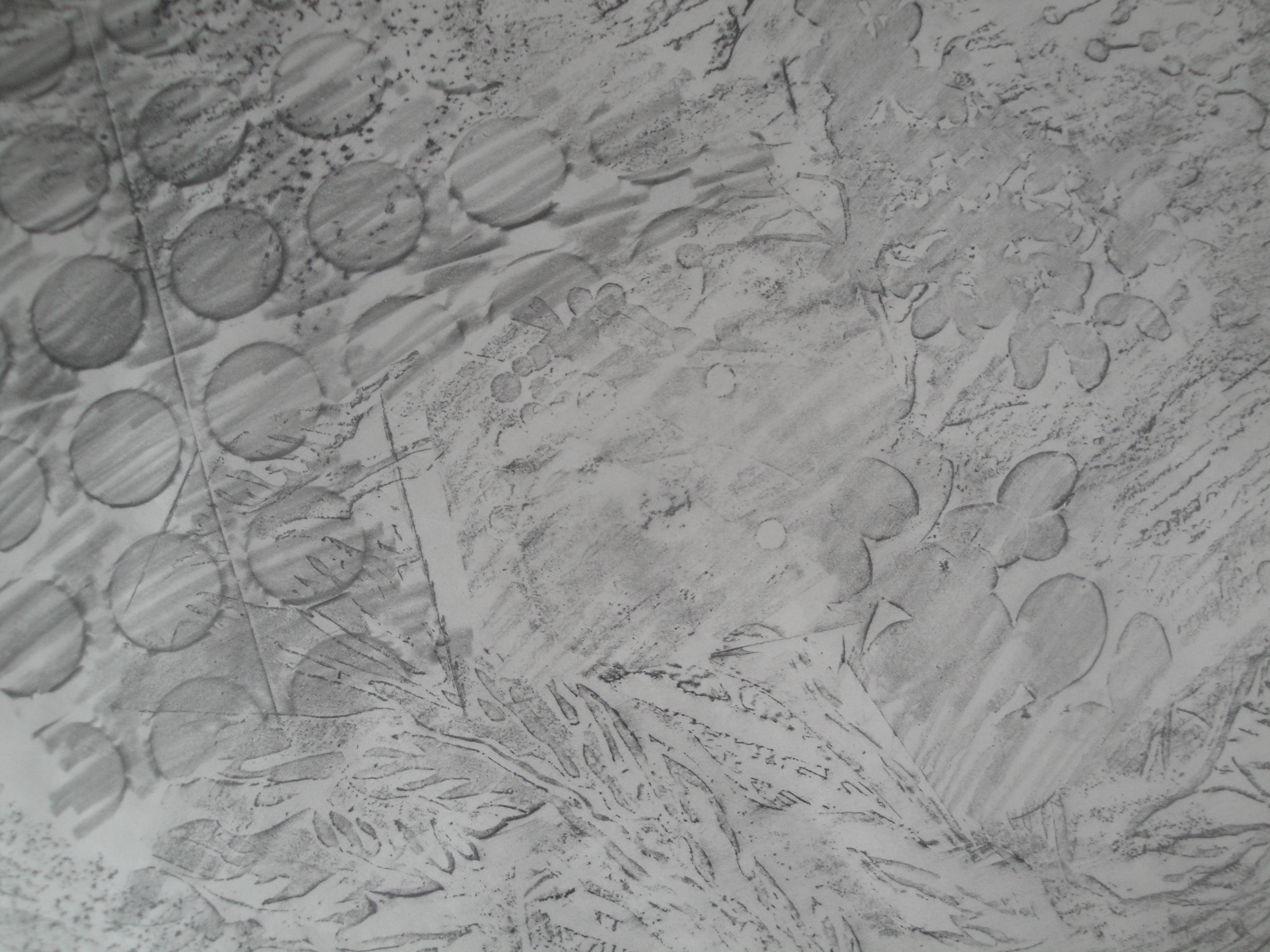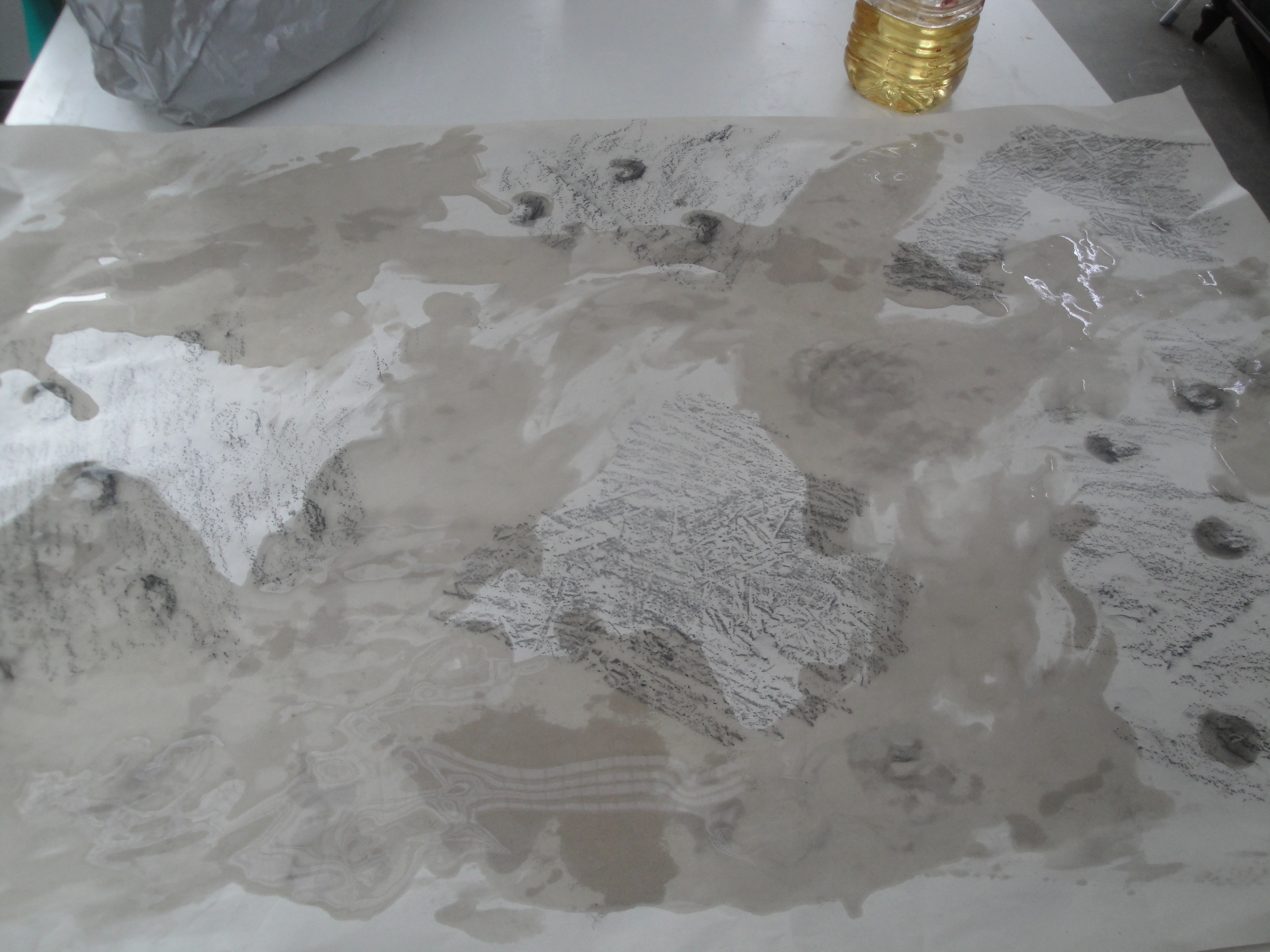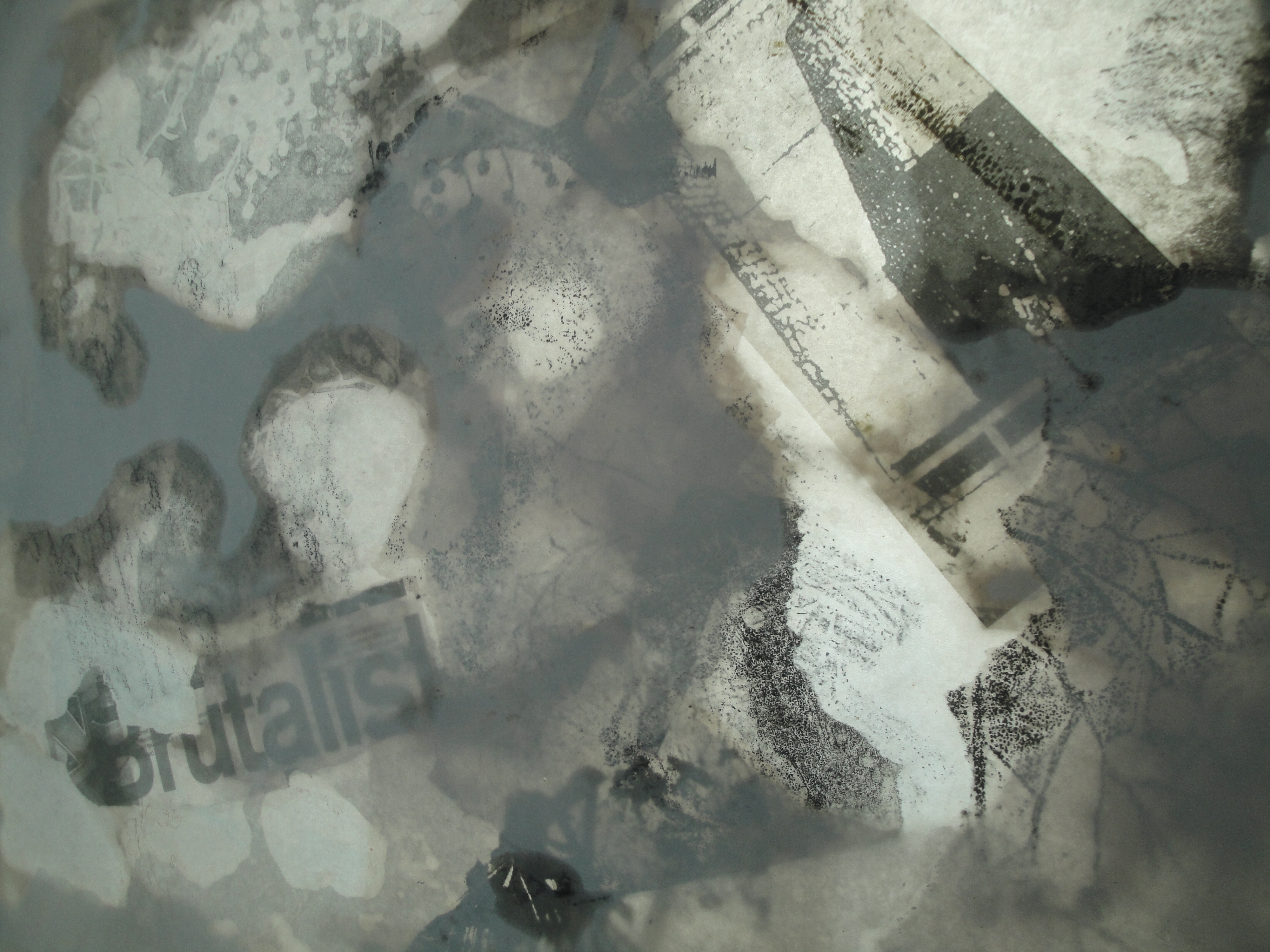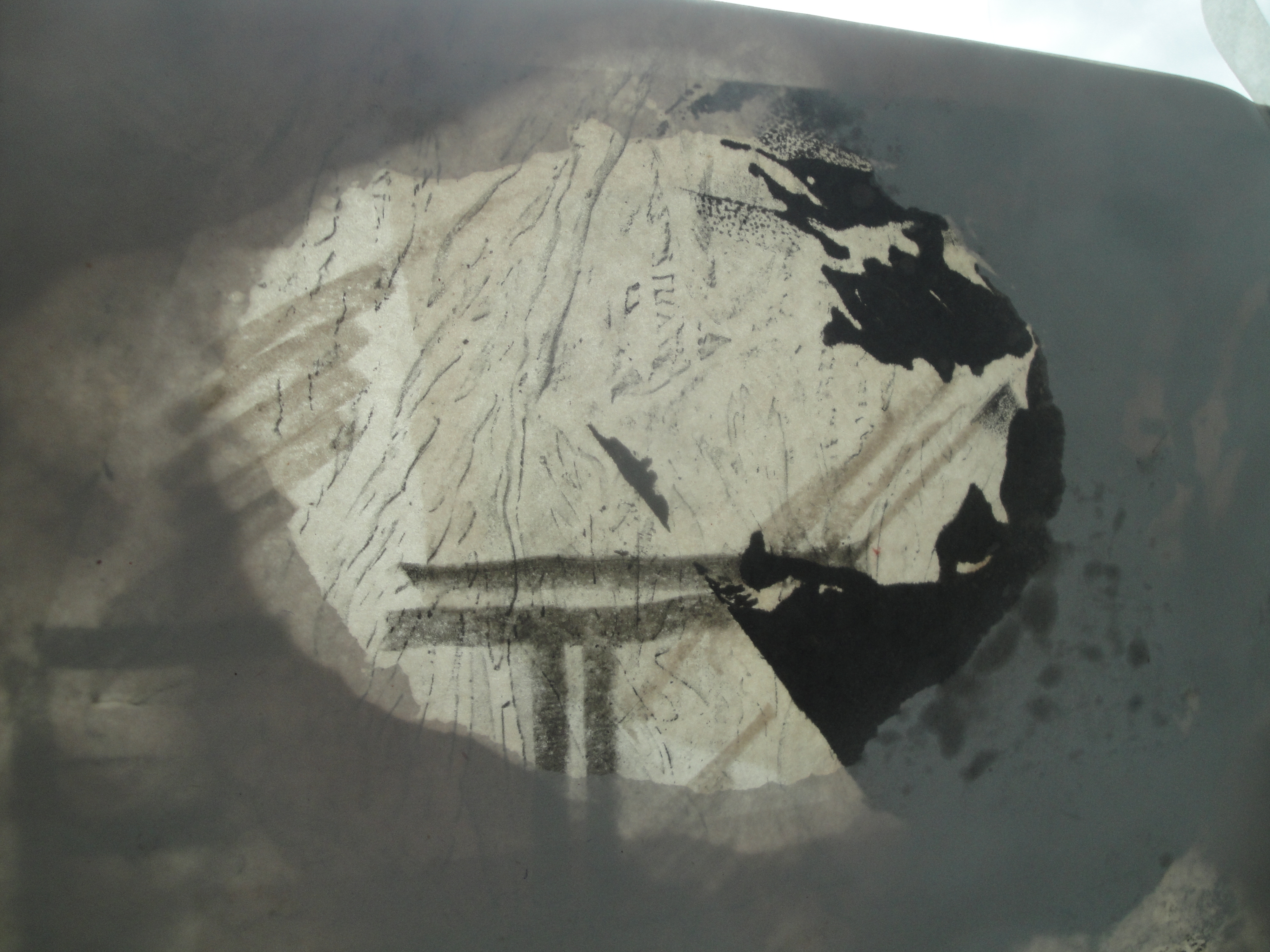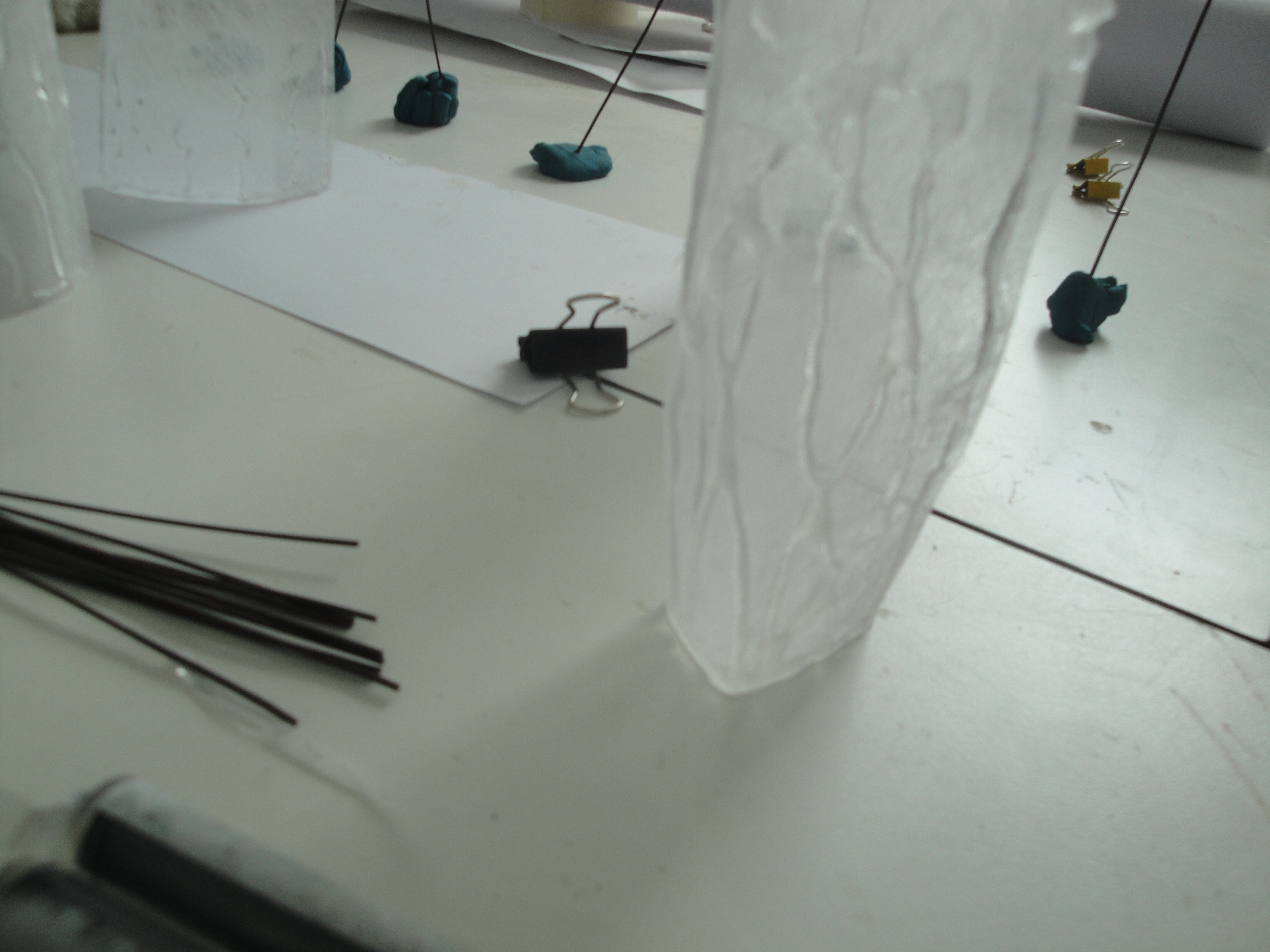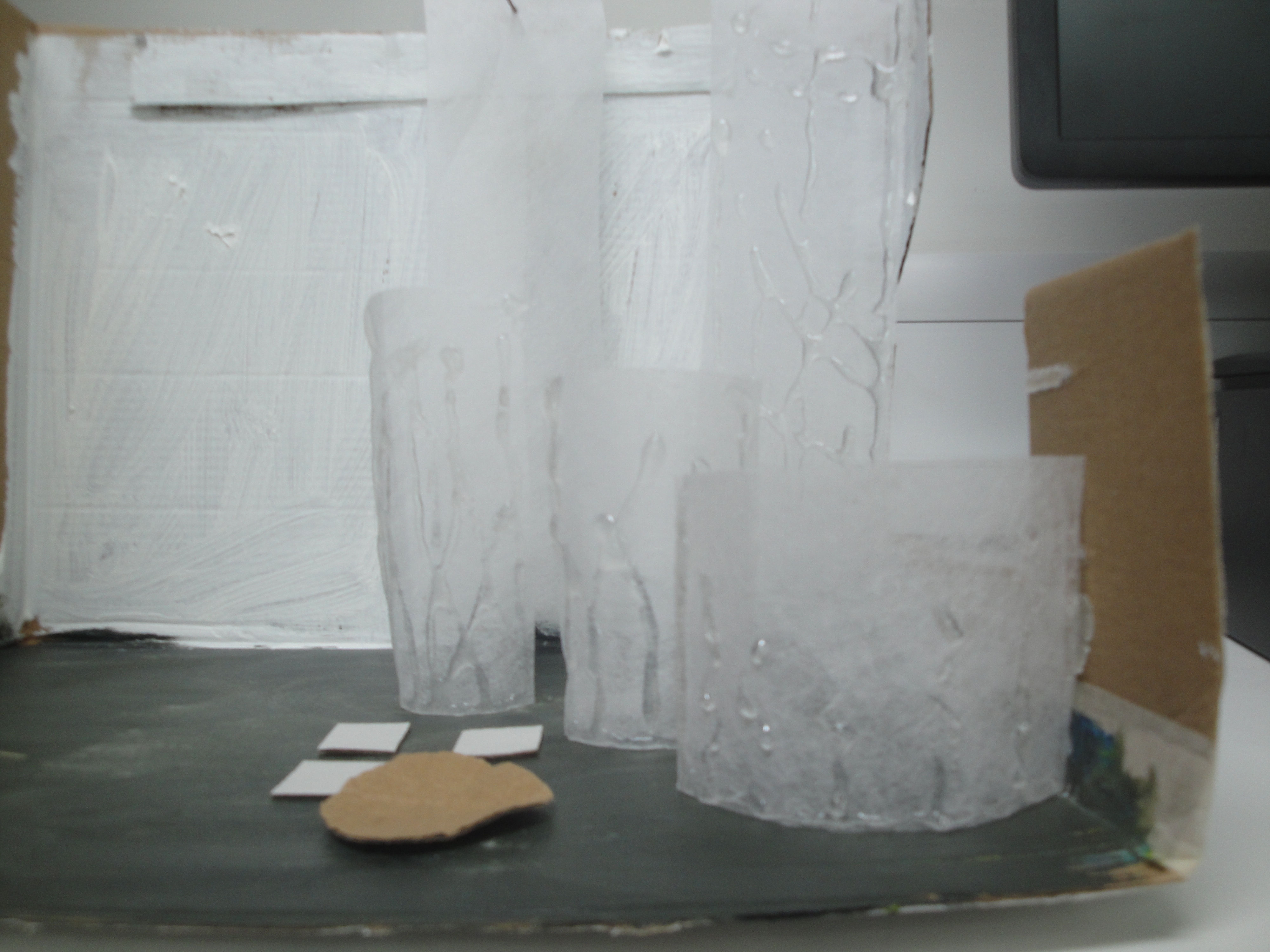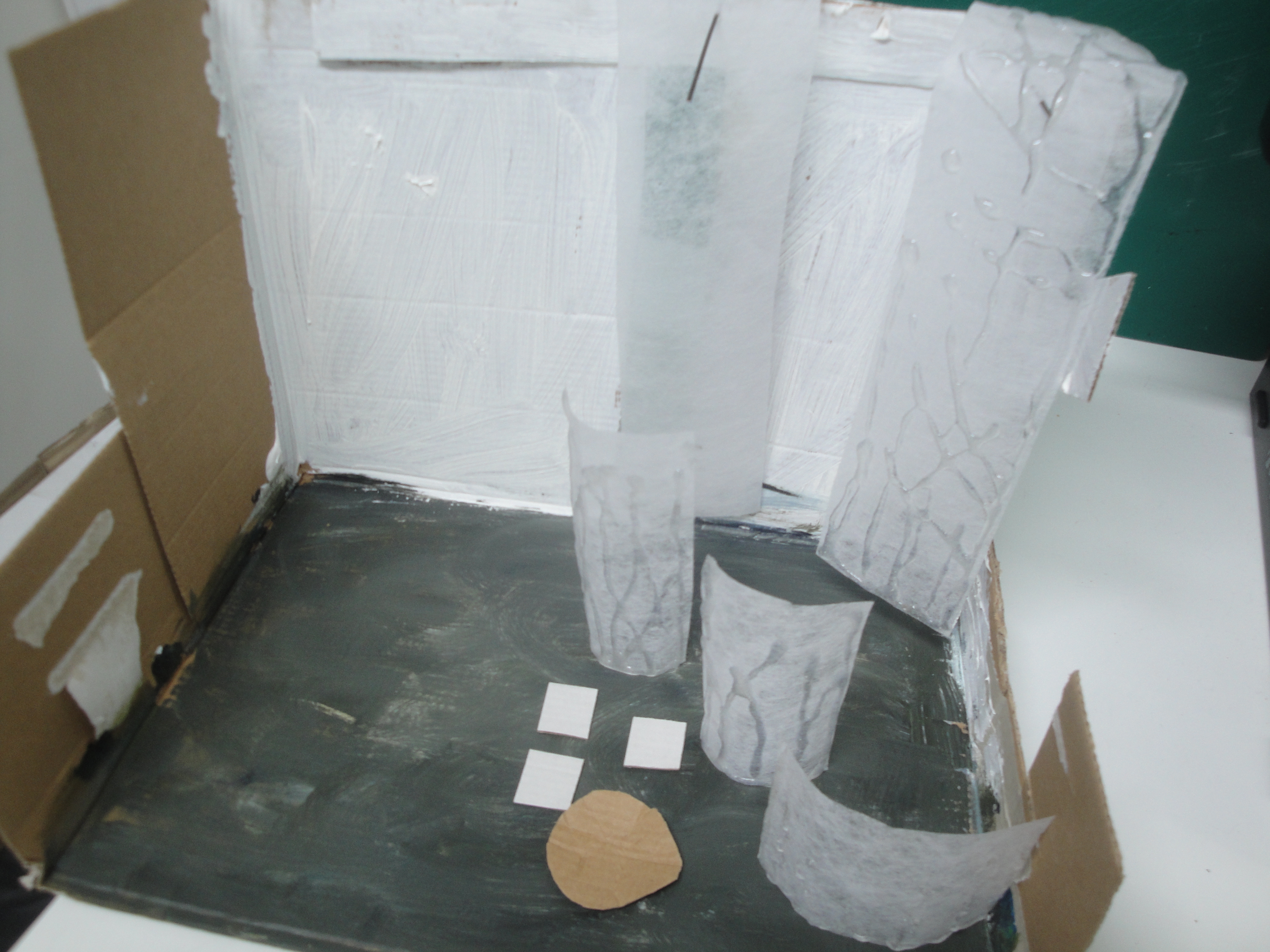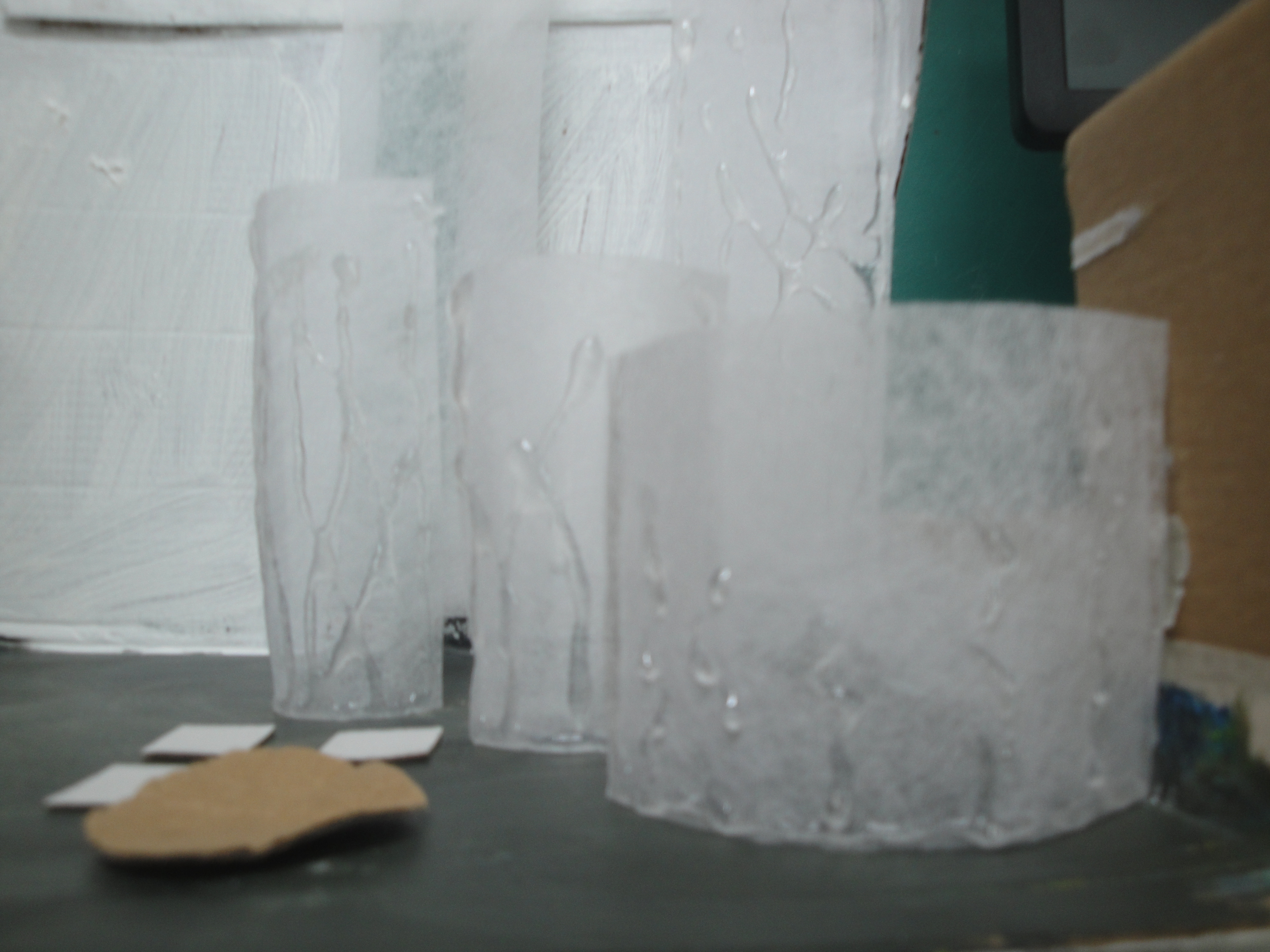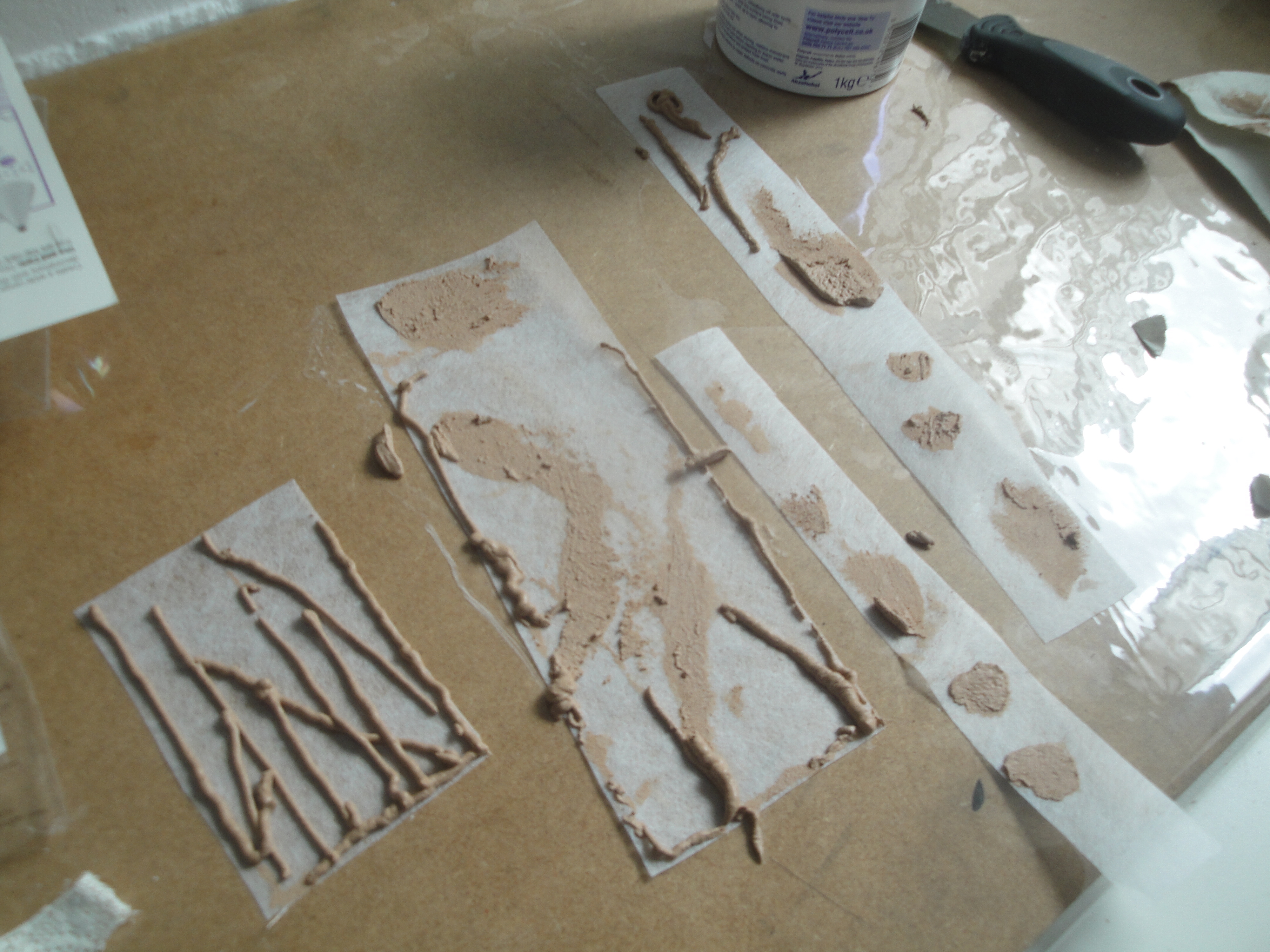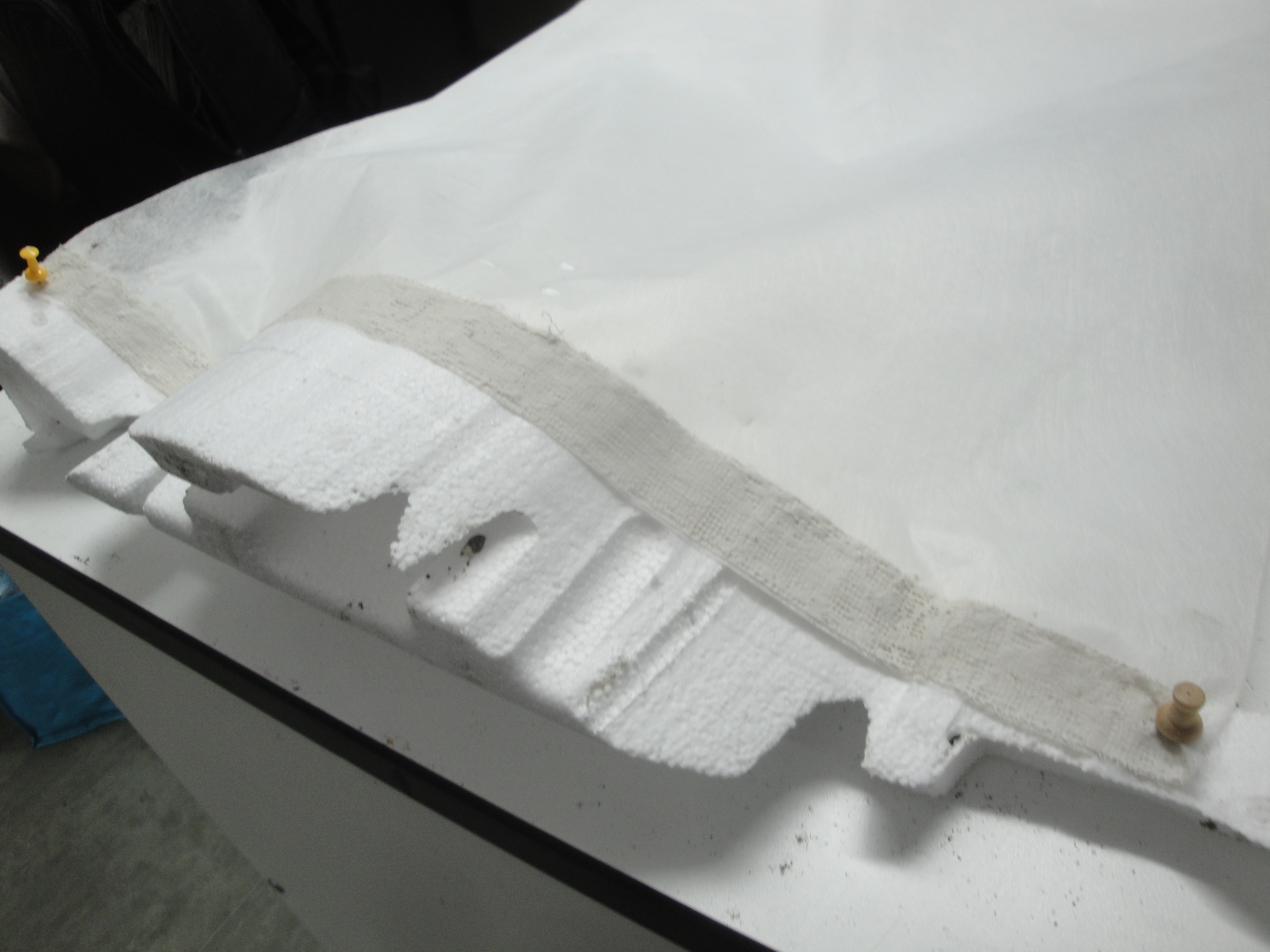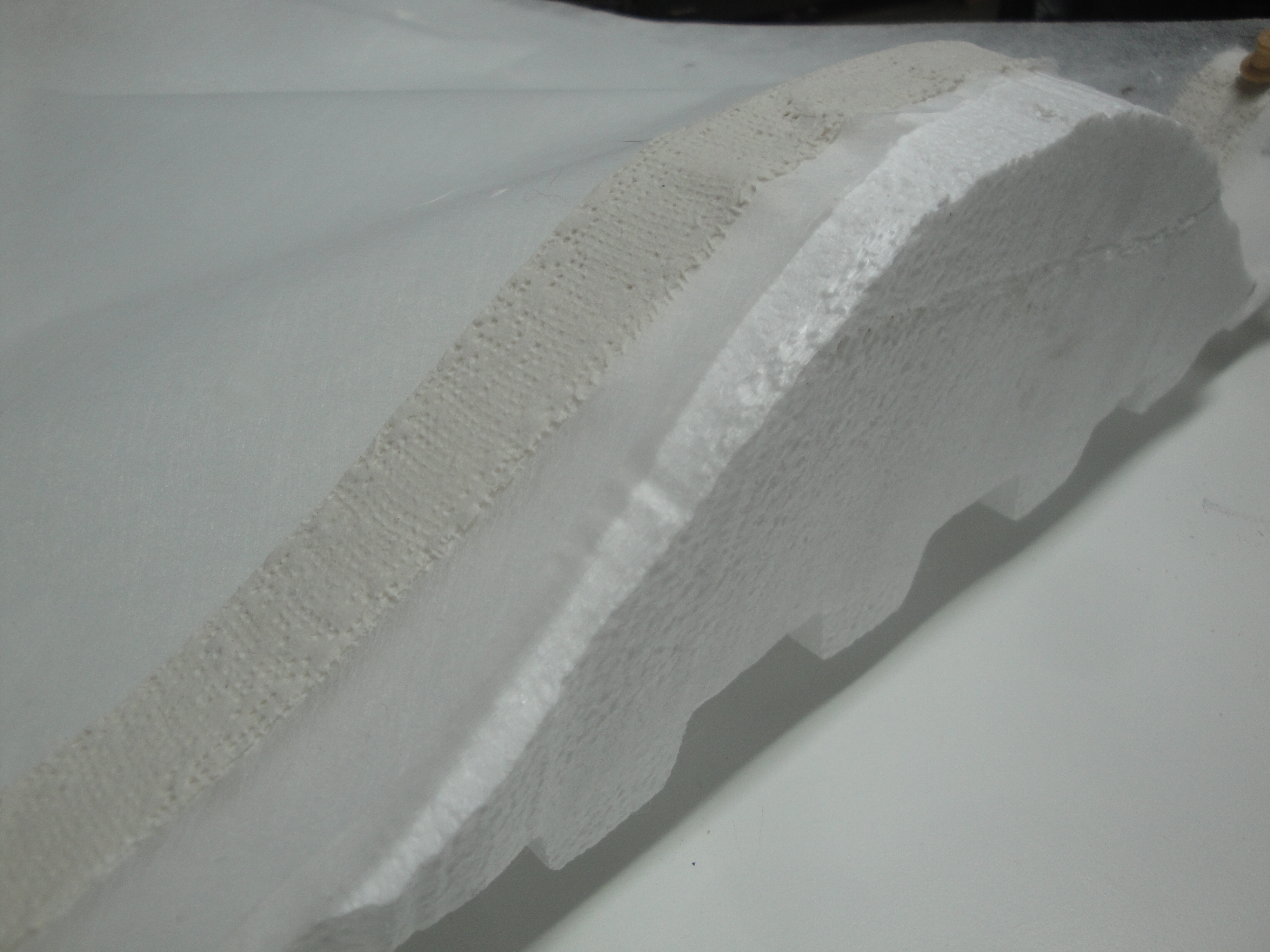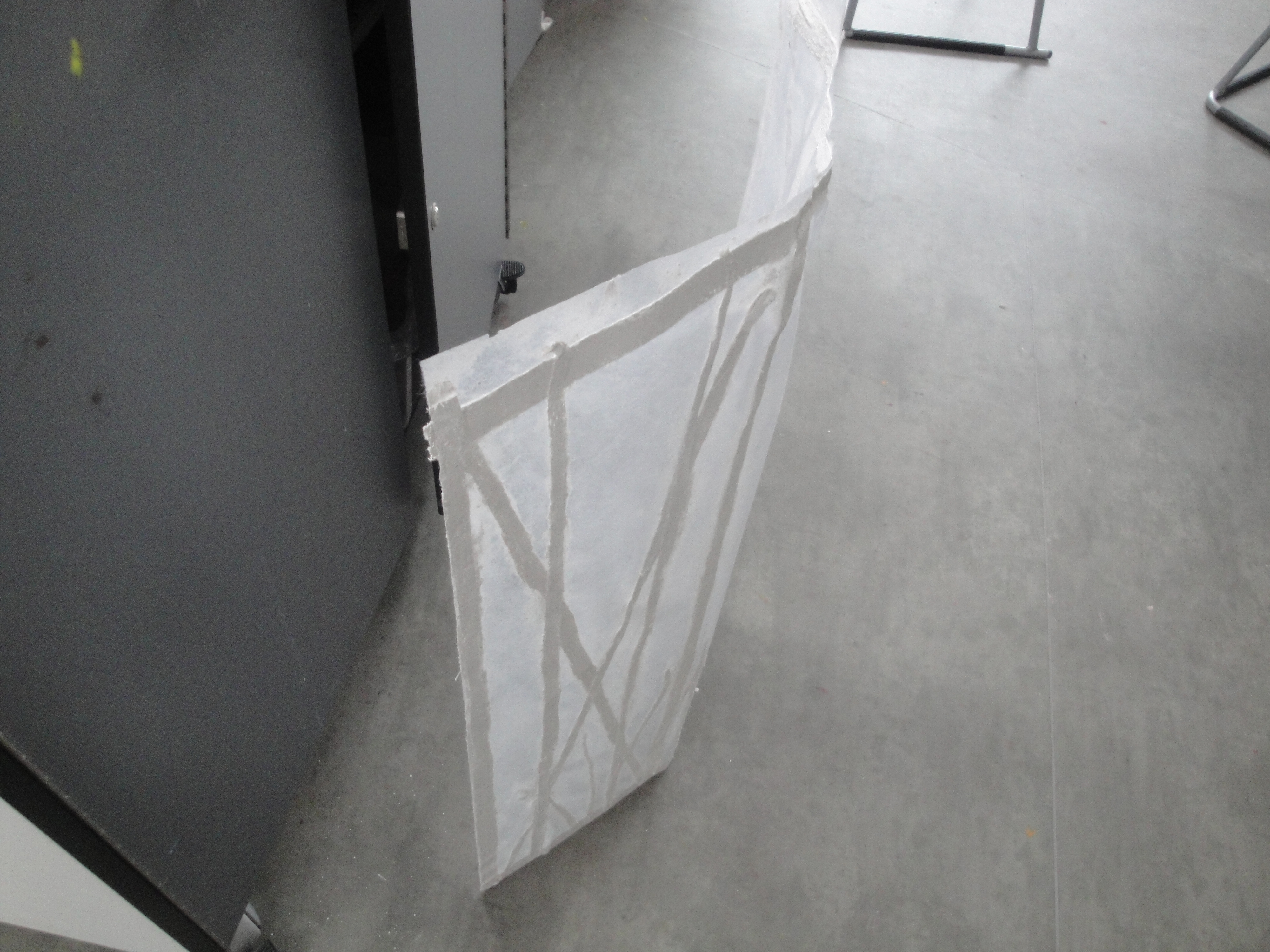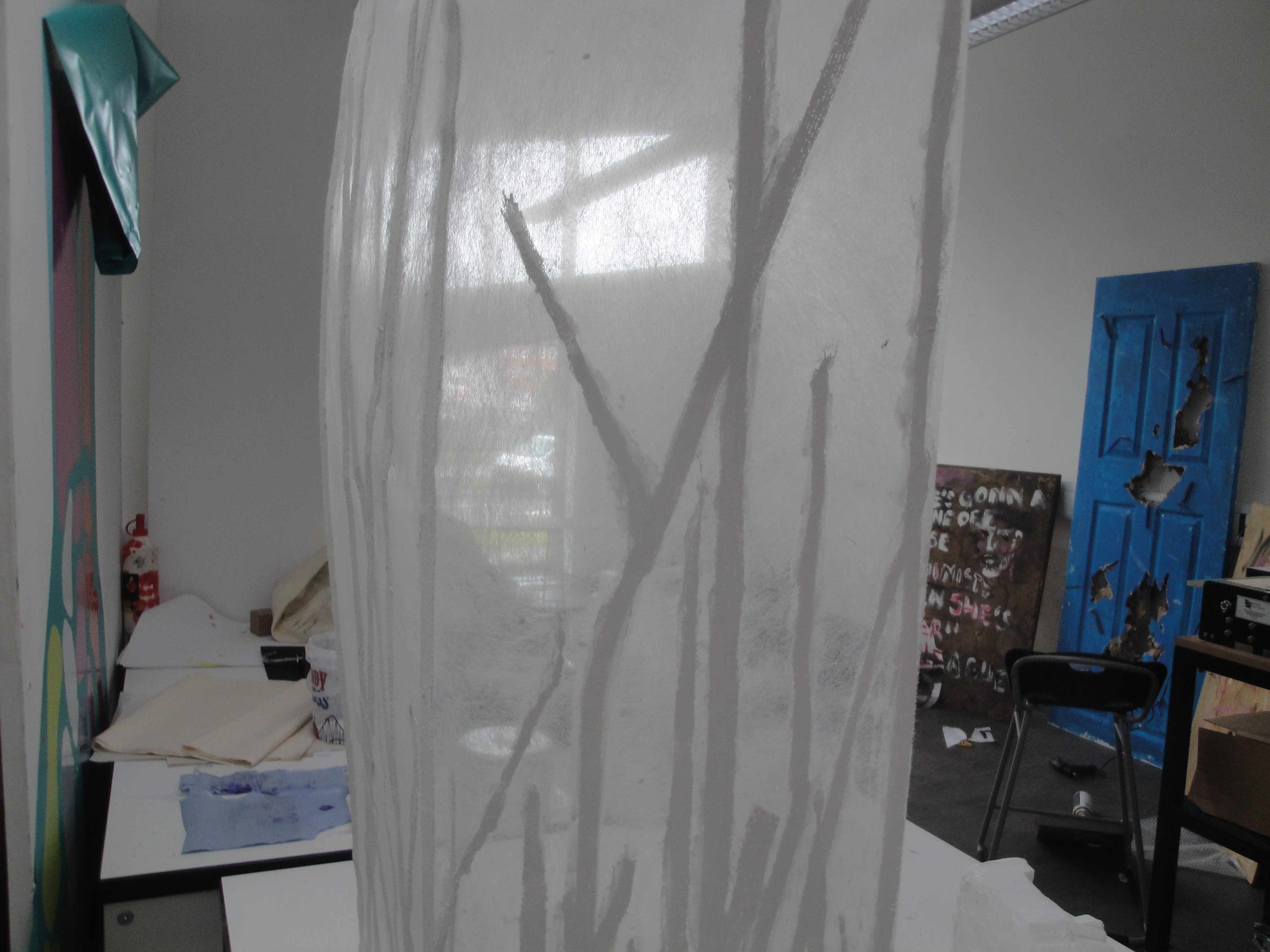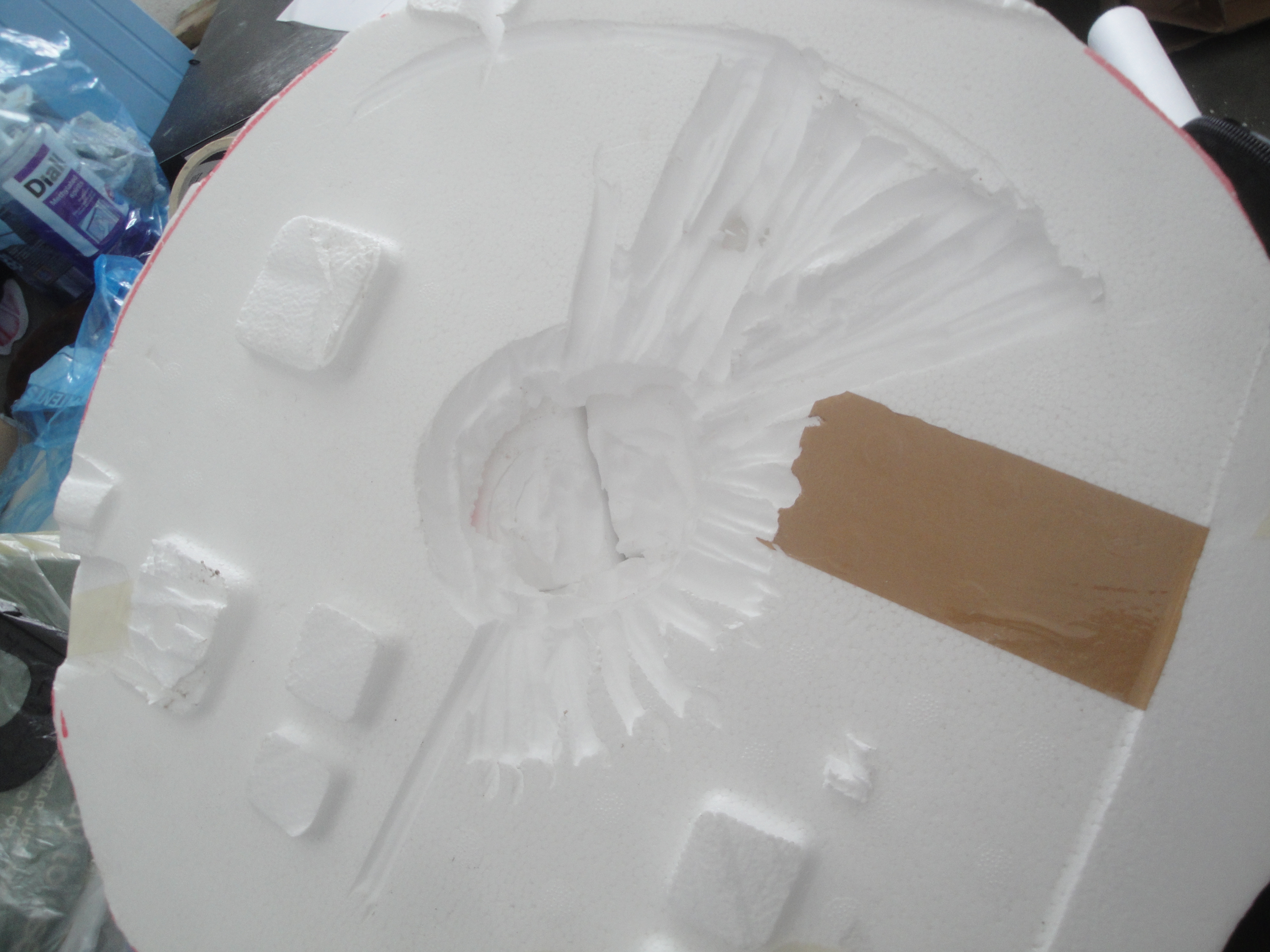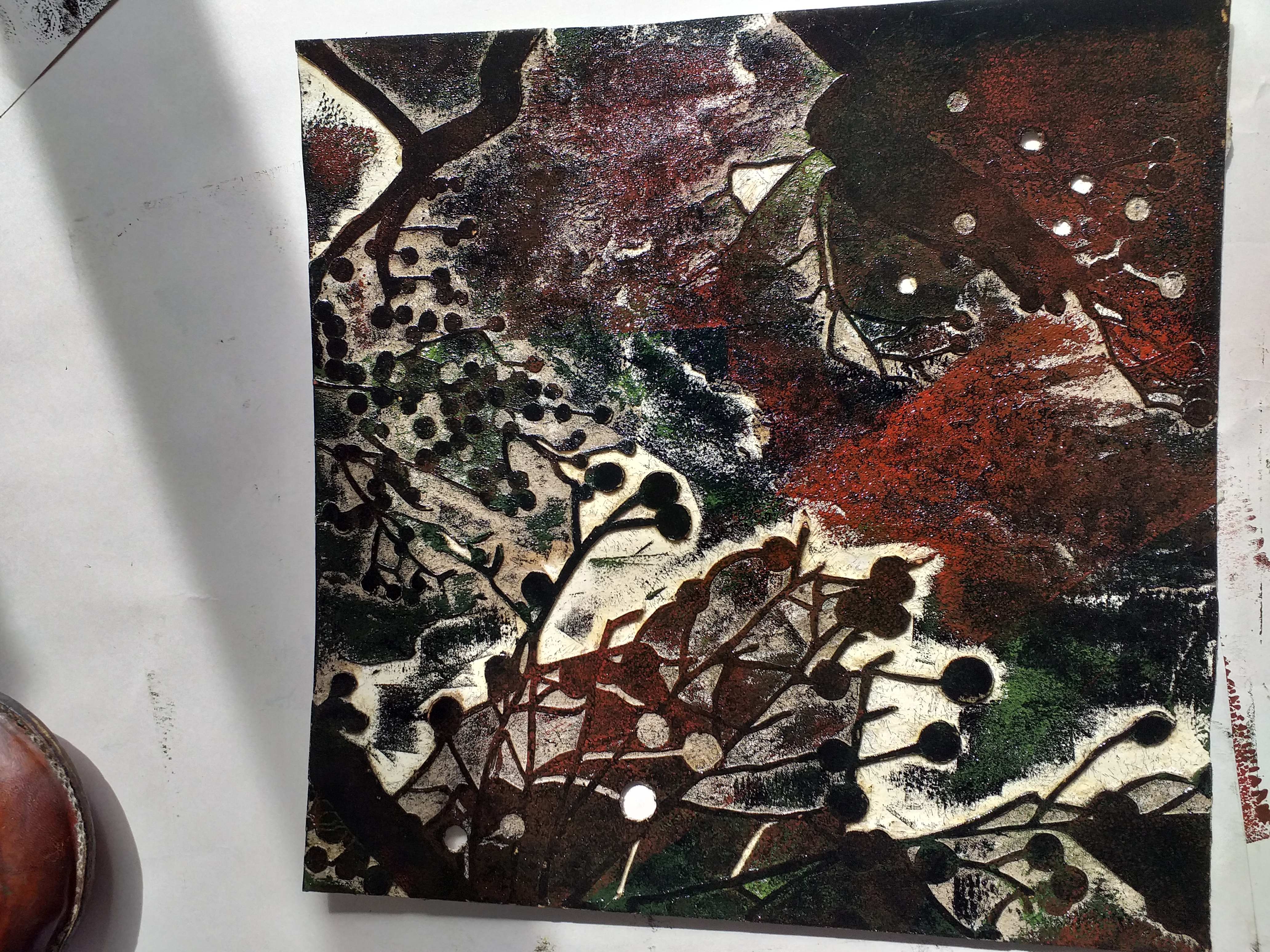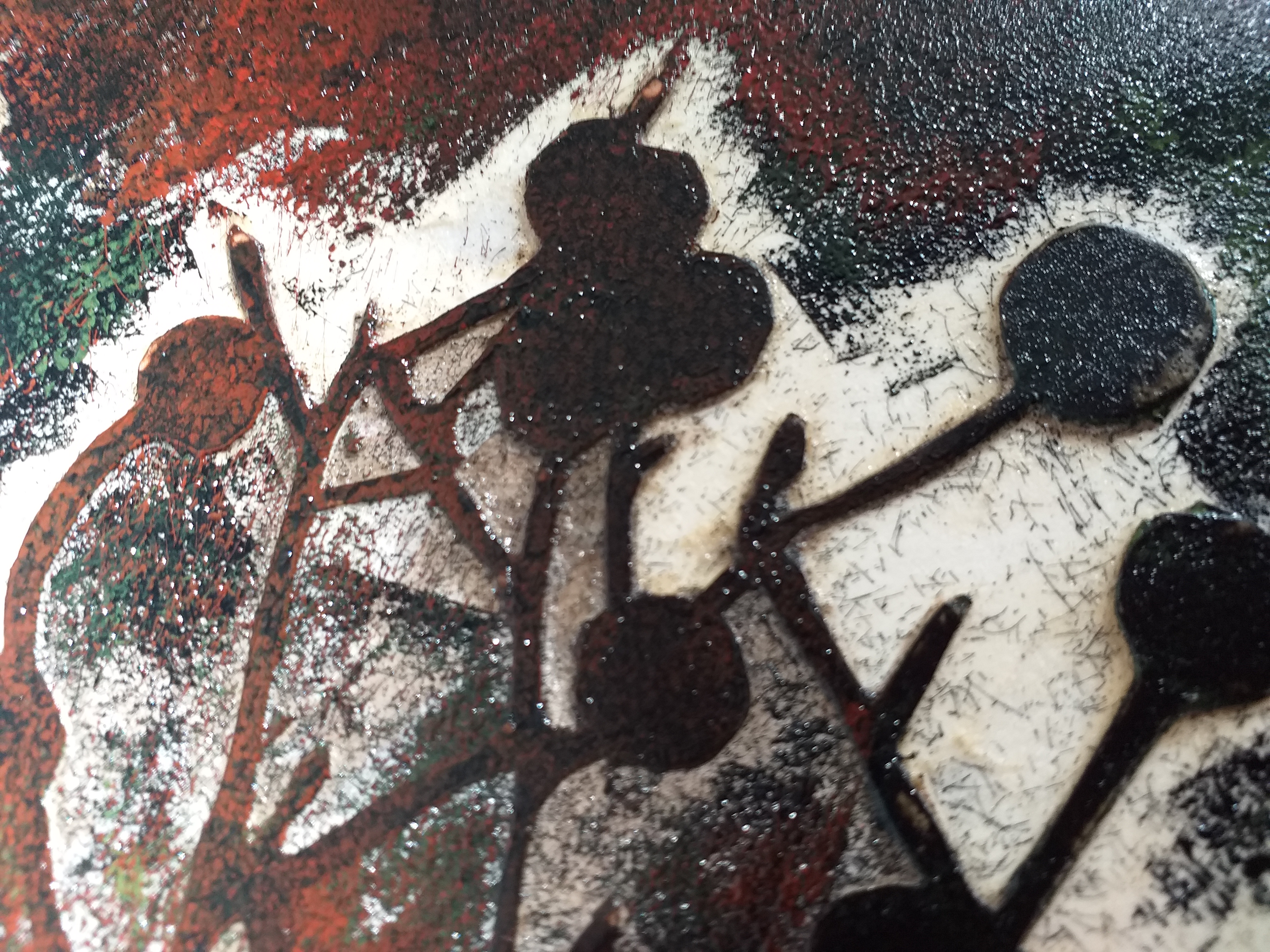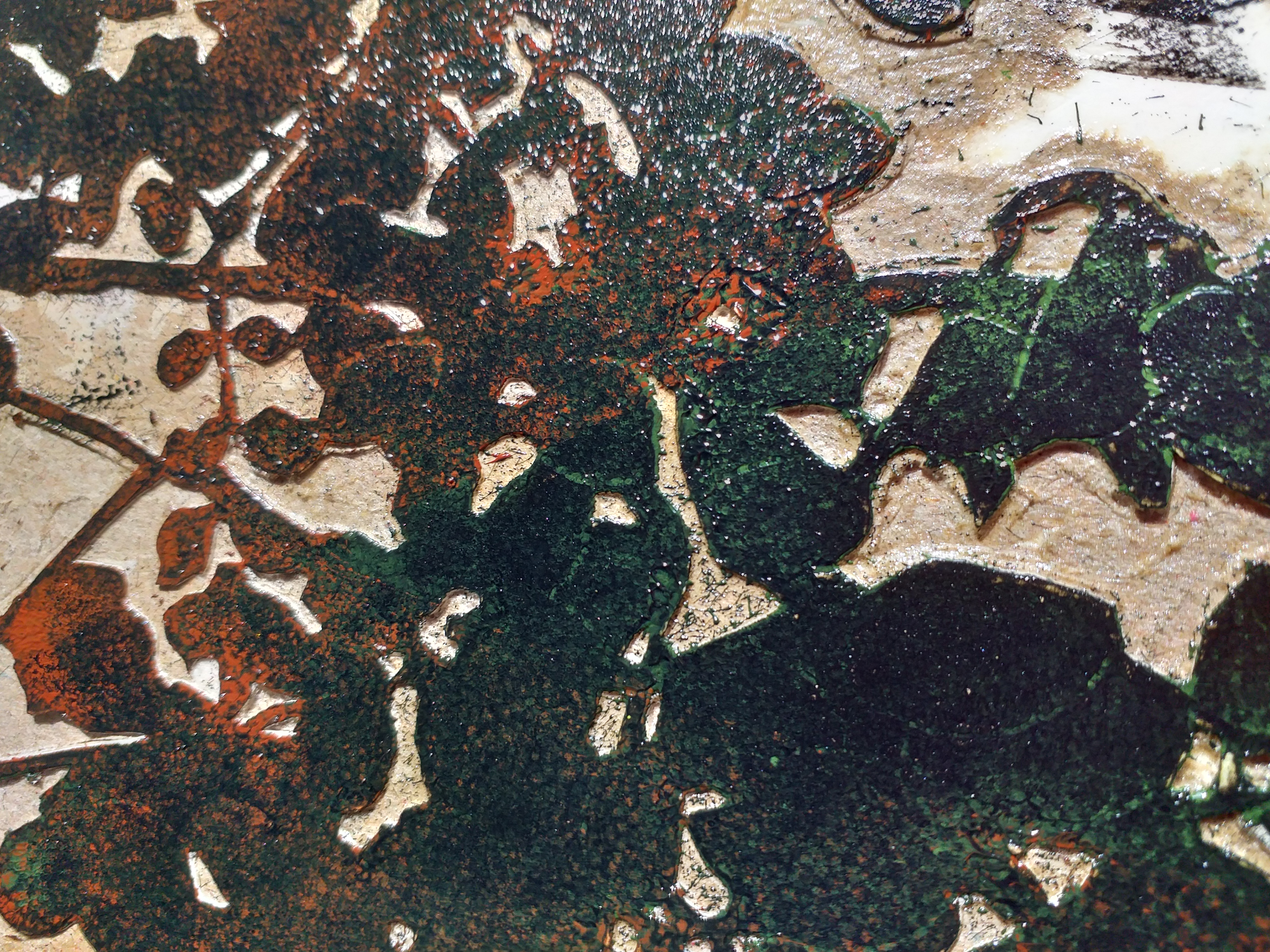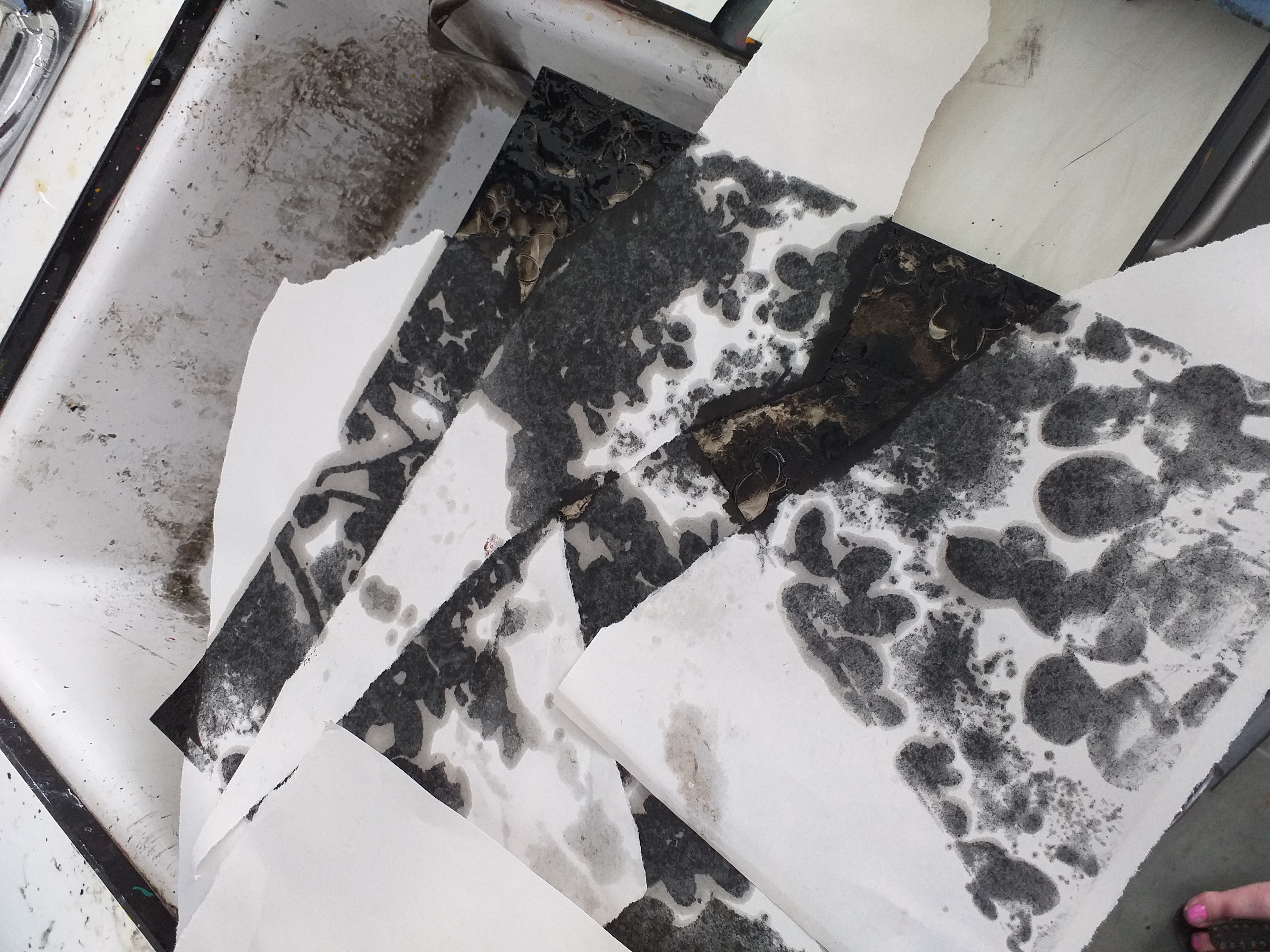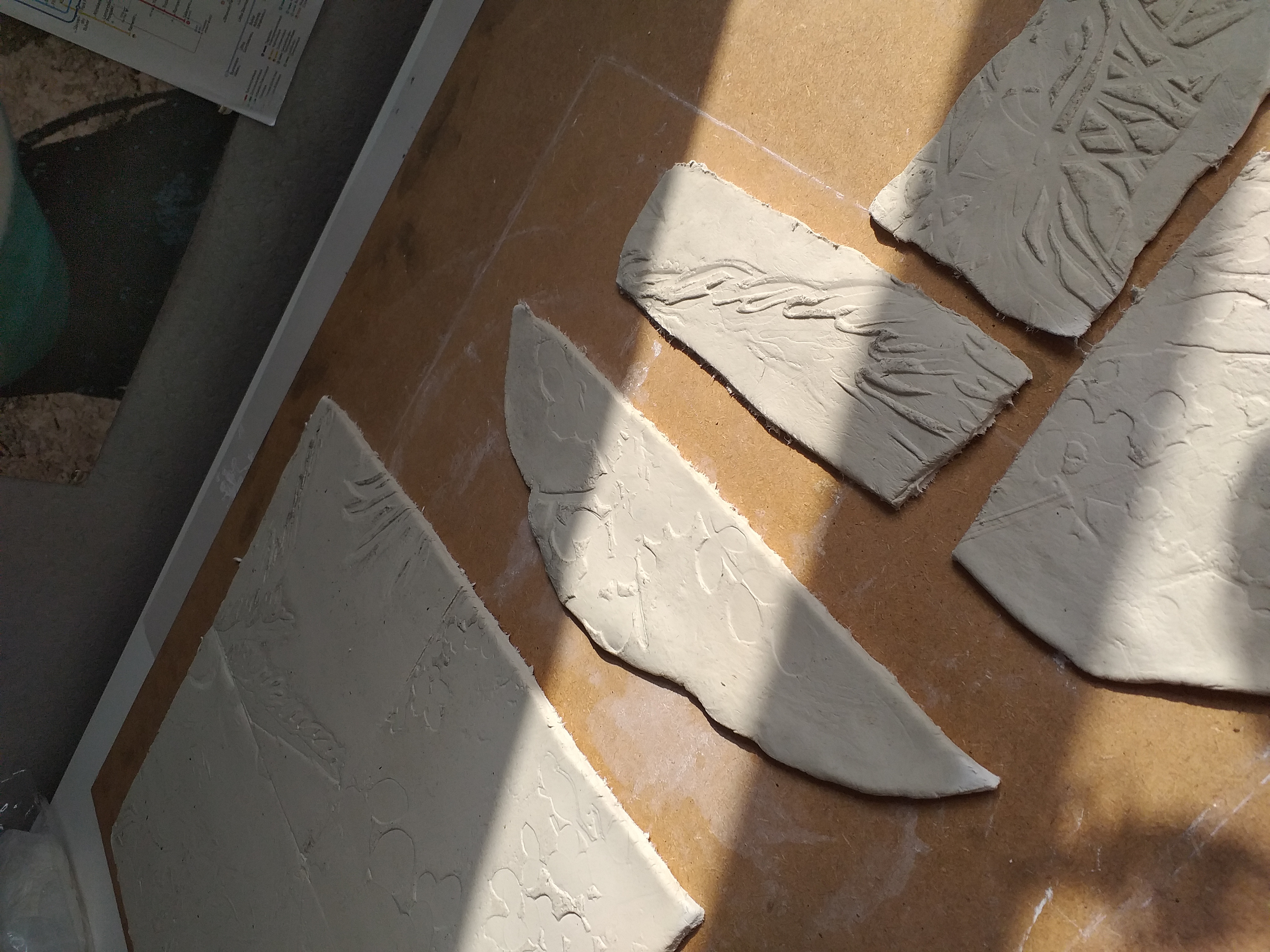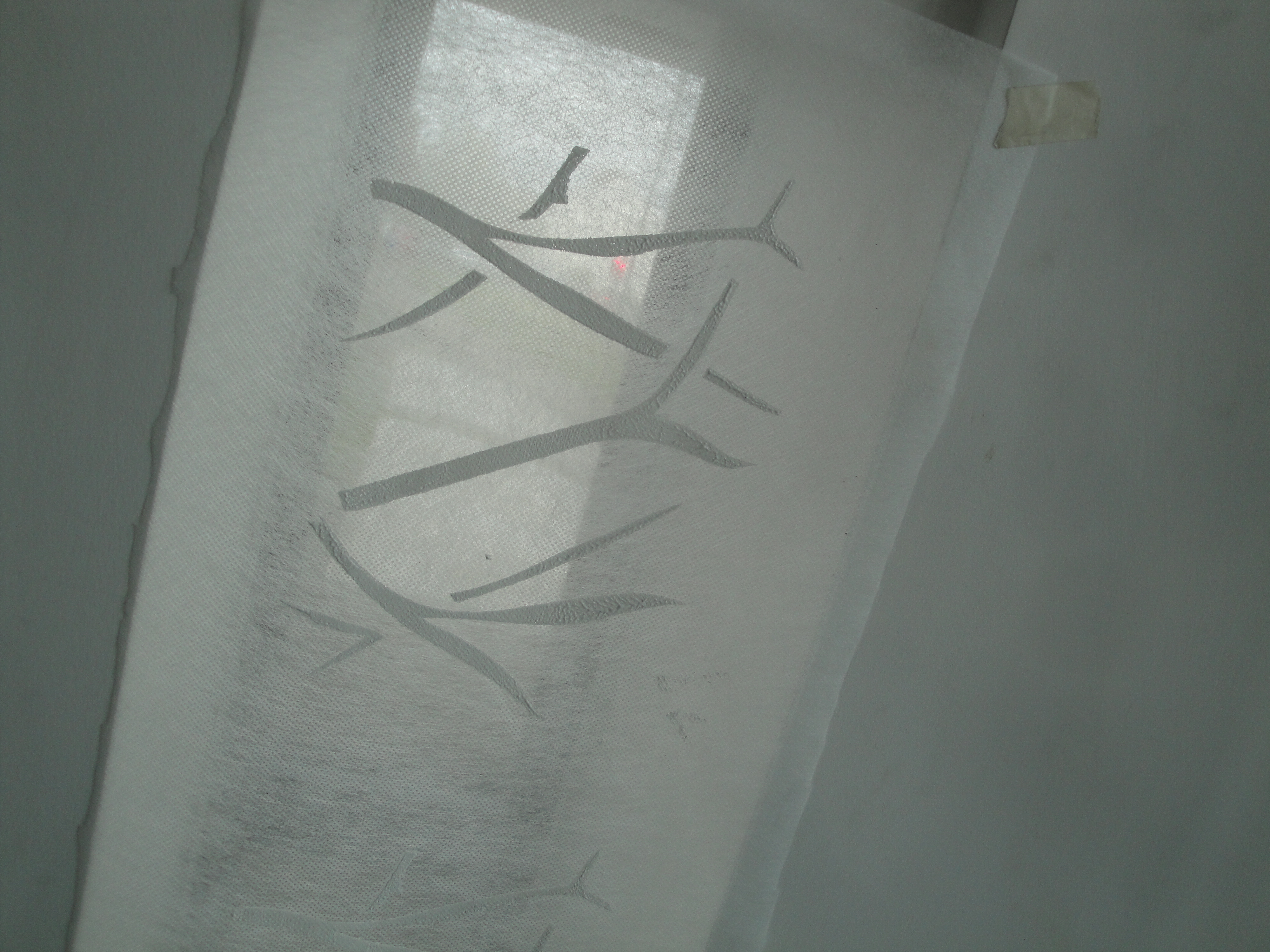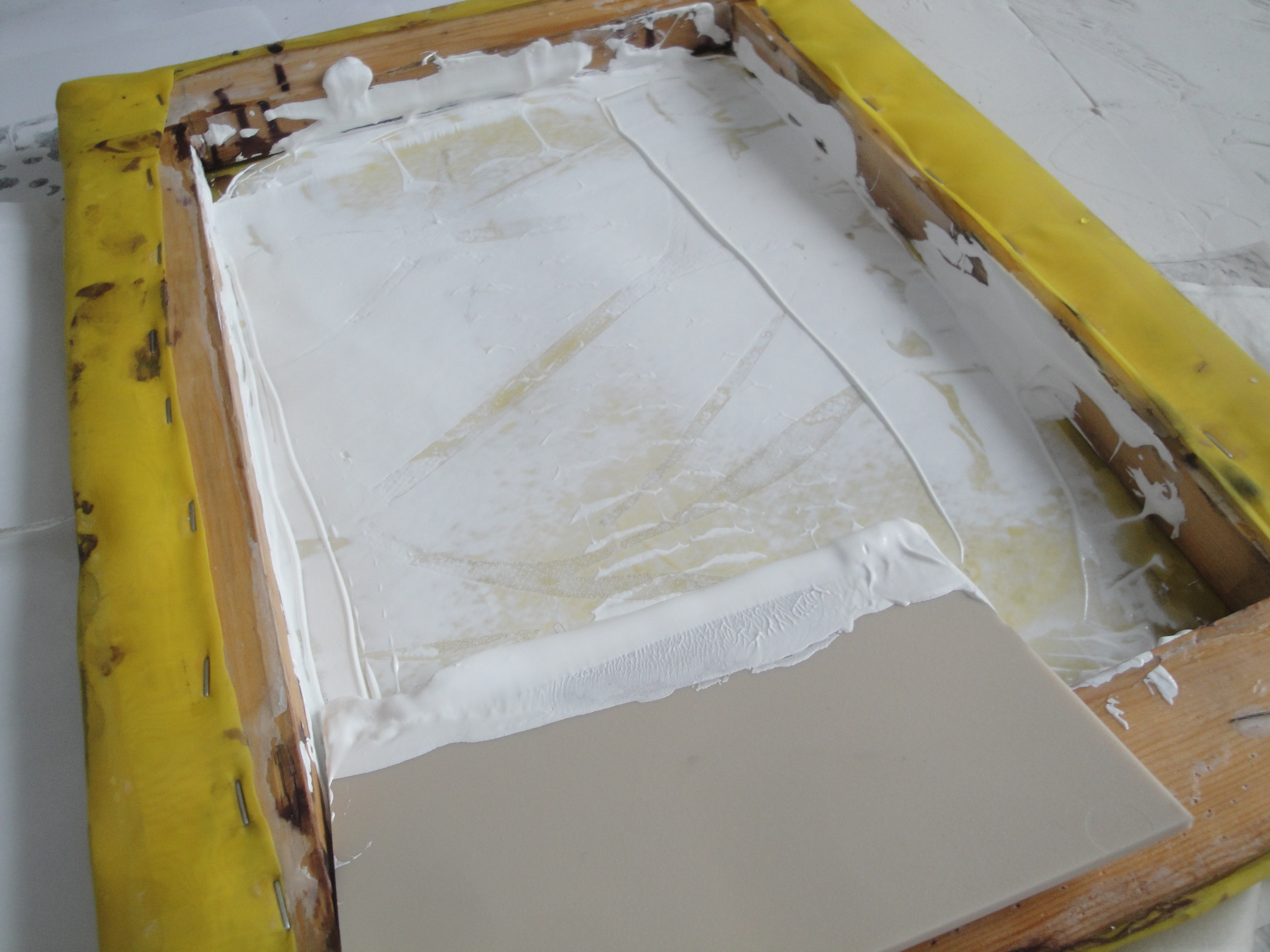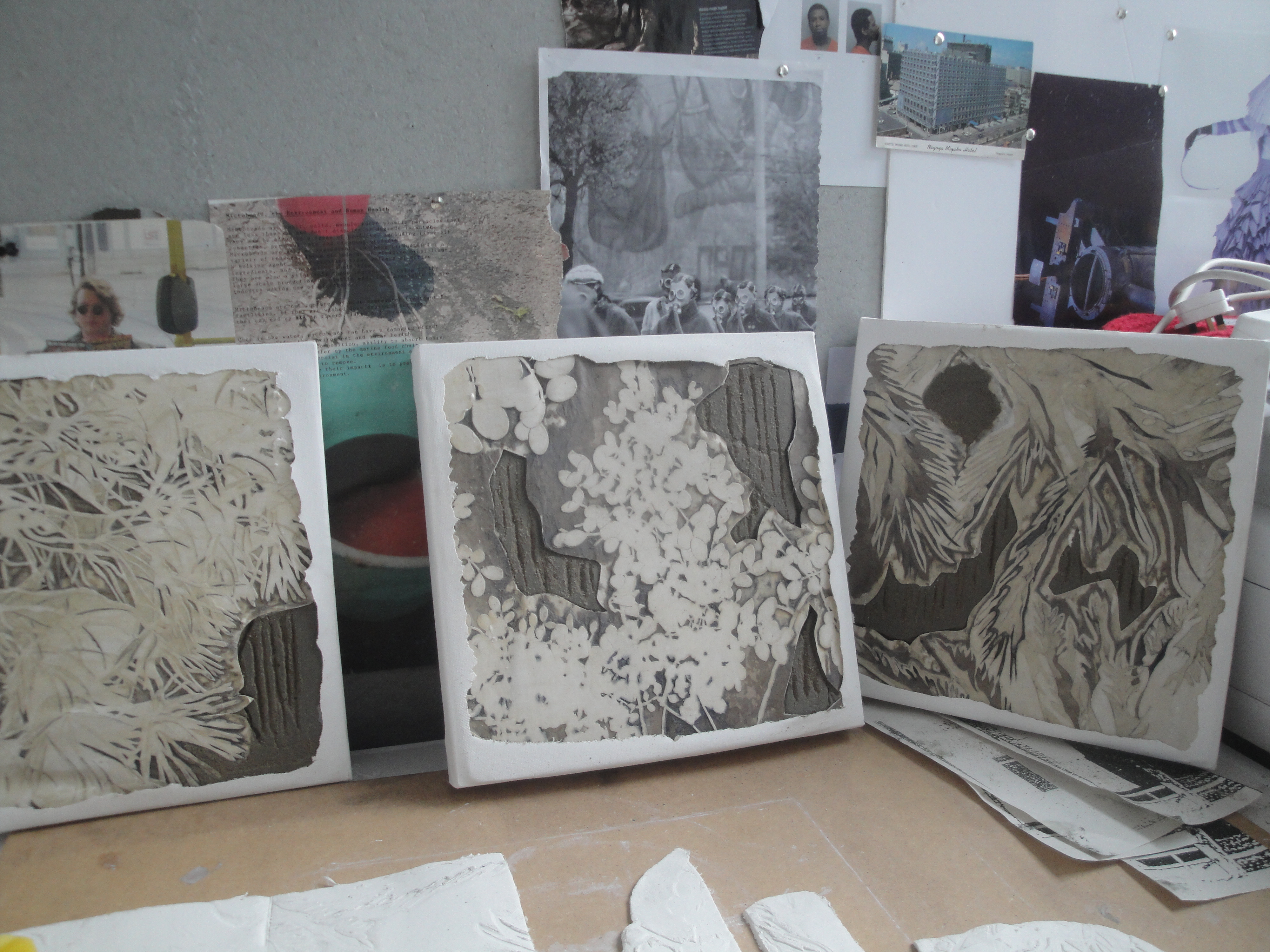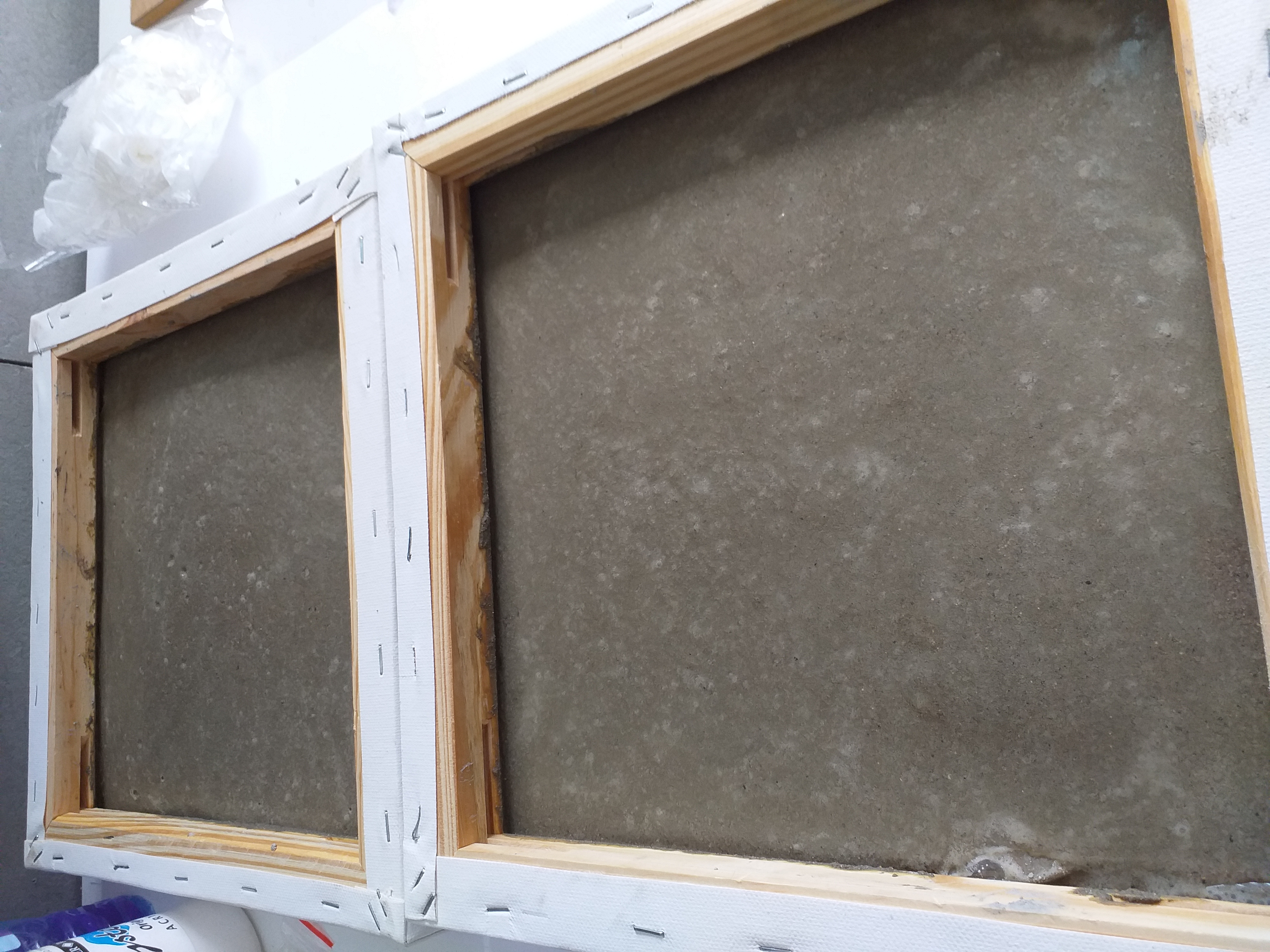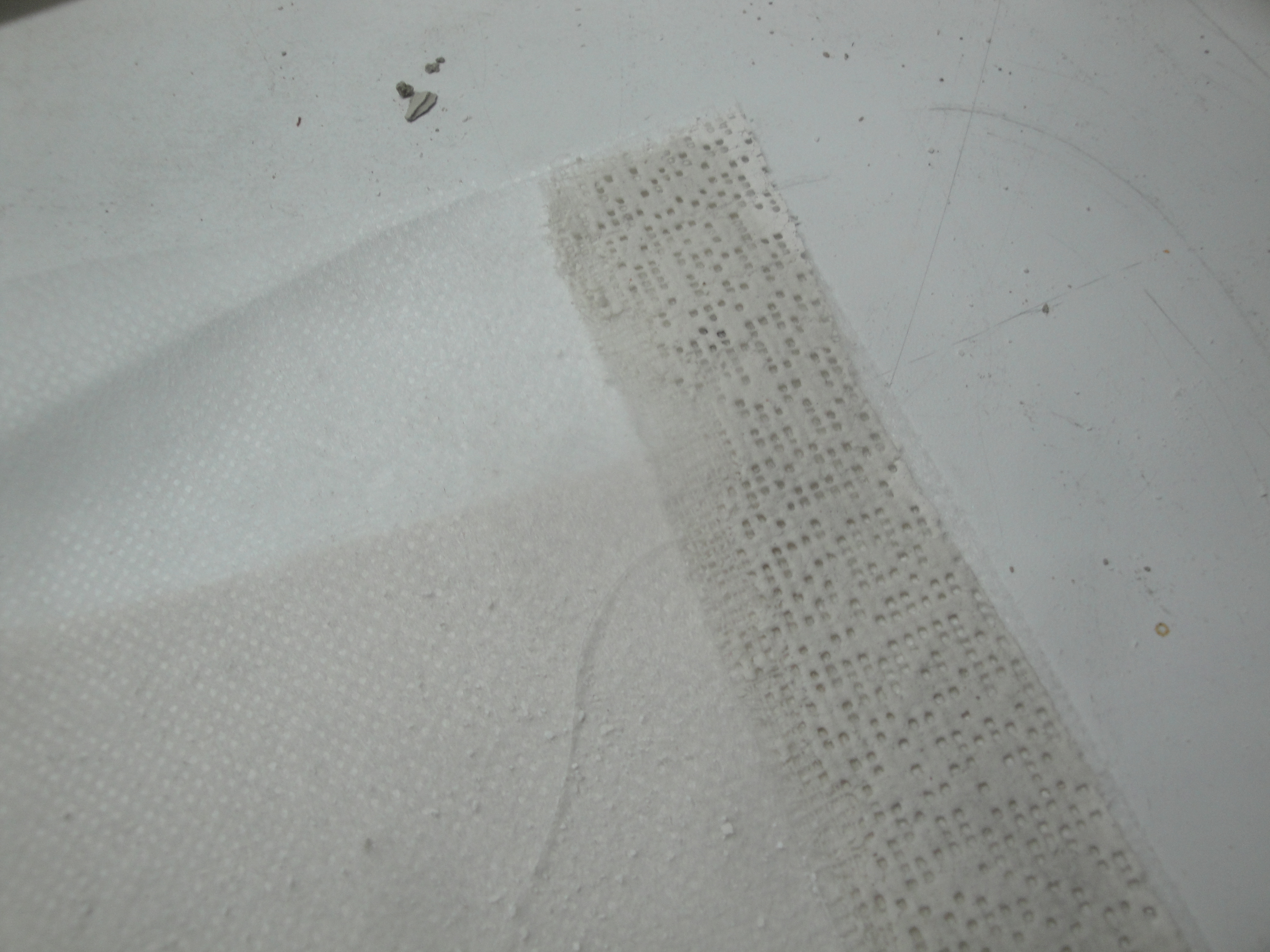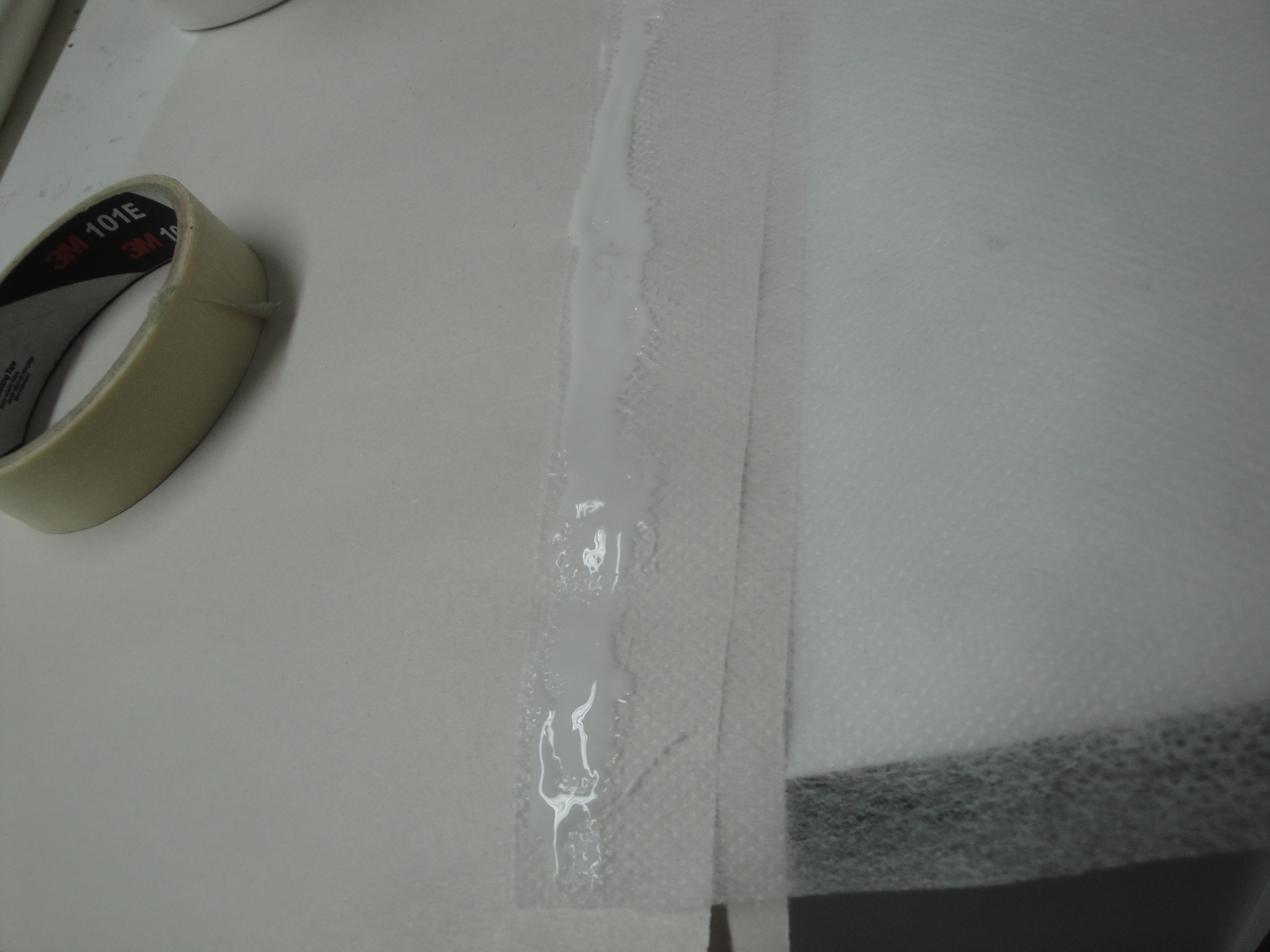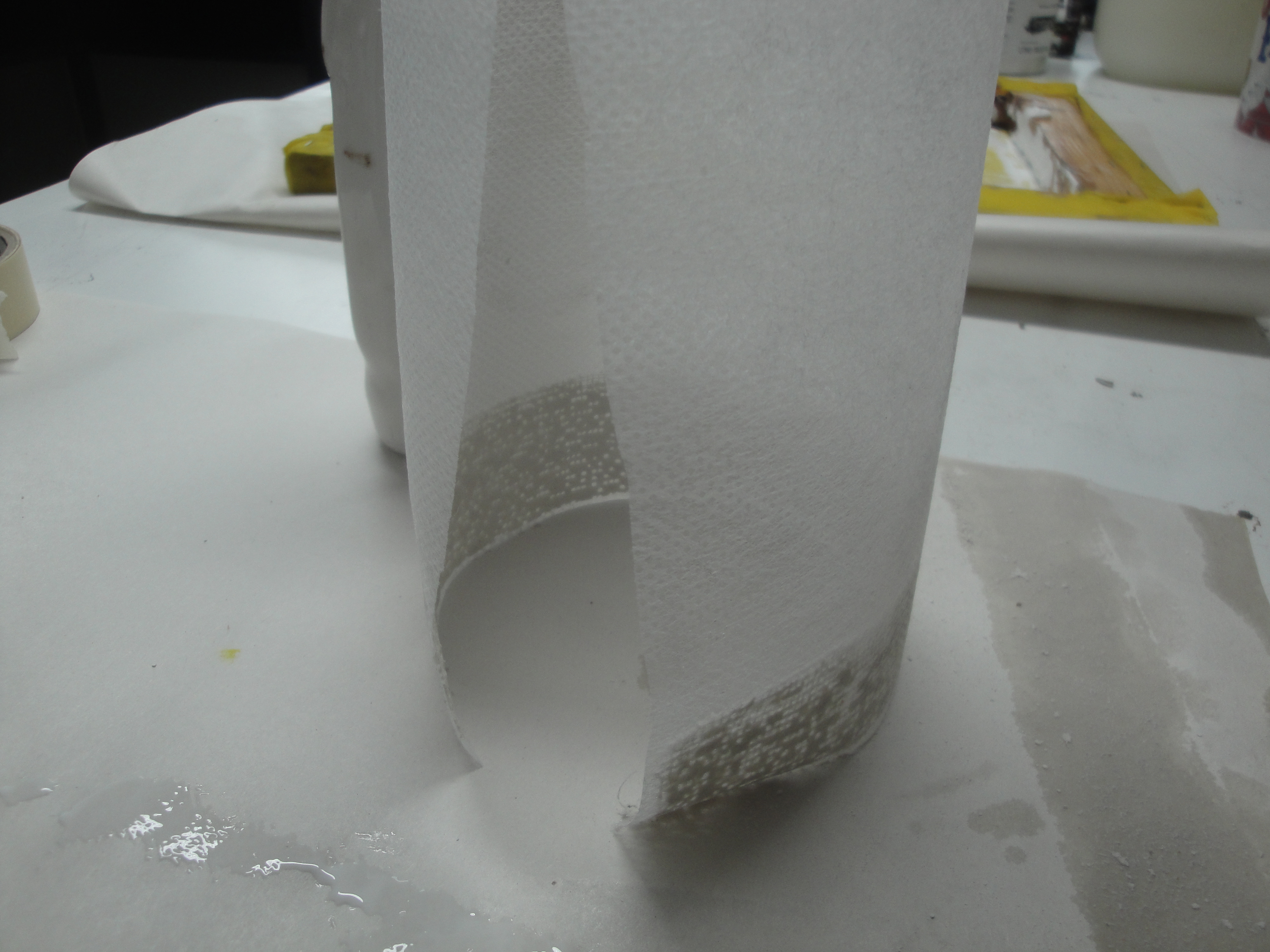Cement work developing the water feature . I have extended the rim, encasing the strengthening wire frame. Being unable to see the result, as the cement moves through the wire creates an exciting element of chance here. I predict that the rim I have added will be flat and shiny where it runs down onto the plastic sheet beneath and this will contrast with the rough internal surface I made last week …. delightful ‘mud pie’ making sort of moulding with my fingers (reminding me of Dreyfuss’ mountain building in Close Encounters ). I am interested to see whether any wire remains visible when I turn the thing over again, it could create quite an interesting effect exposing the materials and their manipulation.
As I have been reflecting upon the key elements that make a garden with the Shinrin Yoku ambience in mind; the evocation of trees (white fabric work) and dappled light through the canopy (the concrete/collagraphy ‘stones’) and of course, water (the bowl); I realise that there is something missing. That place for pause and contemplation – somewhere to sit. I would like to echo the feel of the concrete collagraphy pieces with the idea of shuttering and those Barcelona motifs. My current intention is to use white clay pressings (speaks with the plaster work on the fabric) taken off the collagraph boards PLUS the imprint of the concrete to combine with cement to make a ‘trencadis’ inspired bench. Thus…. acquisition of some timber supplies to ‘match’ the tile frames.
Finally, cutting the plaster strips in preparation for the white work.
Laying out the strips for structural integrity ( triangle criss-cross the support the fabric) AND a balanced composition. Have decided to ‘paint the water onto the plaster strip for precision – crisper lines to contrast with the rough concrete aesthetic.

